Francesca and Henk-Jan's Backpacking Trip!
Thursday, January 14, 2010
Bye Bye Bangkok
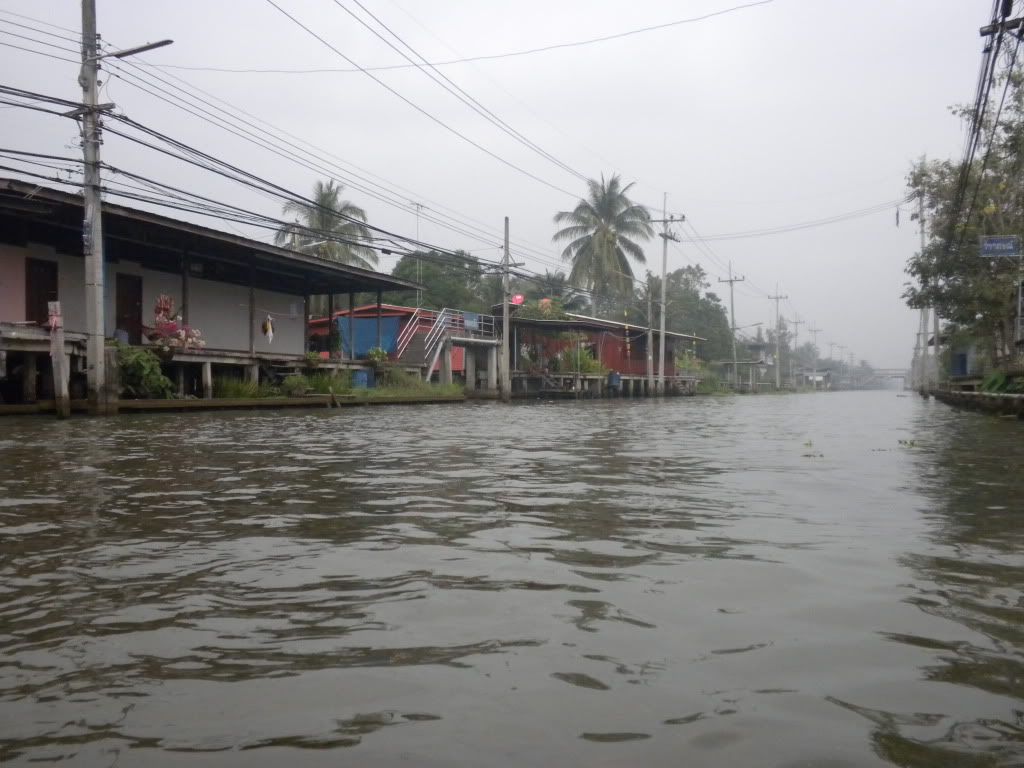
As we got near I spotted the sign and knew we were there. The boat moored and Francesca and I walked into a madness of souvenirs. Not local produce or anything… No, it was all China-ware and all the stalls were stuffed with it. We wondered if it had been any better many years ago before all the tourists started visiting. Luckily this wasn’t the floating market yet; we still had some hope left of seeing something better. Our guide made sure we bought some tickets to explore the market by longboat and soon we were off in a cramped boat, amongst the hordes.

To explain a little about the Damnoen Saduak floating market: Since there’s so much water around here, a market on land is not viable. People couldn’t cross all that water, so they figured: why not hold the markets on the water? Everybody had a boat anyway, and could easily put their wares on it. The floating market was born. At first, the people only sold or traded their extras to other villagers, but when the market became a tourist attraction they added souvenirs to their inventory. Nowadays the touristy crap far outnumbers the traditional goods. Unfortunately, our visit only added to the promotion of the above.
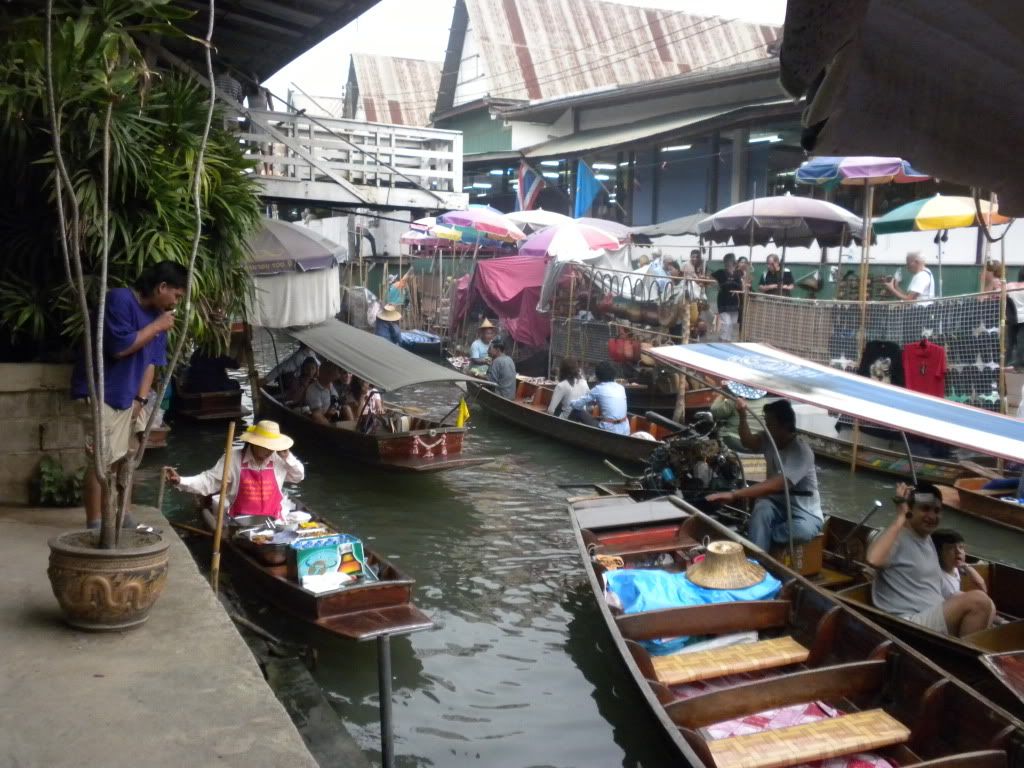
The local woman that manned (womanned?) the boat paddled us around, taking us all the way to the end of the market. The best part of the market definitely was the food. Francesca and I saw a number of villagers cooking up food and several boats were loaded with fresh vegetables and fruits. We made a mental note to come back to two boats with some very tasty-looking chicken and a snack we hadn’t seen before. The tour continued with some more desperate salespeople trying to shove some souvenirs in our face. Other people on our boat bought some stuff, so we got off easy.
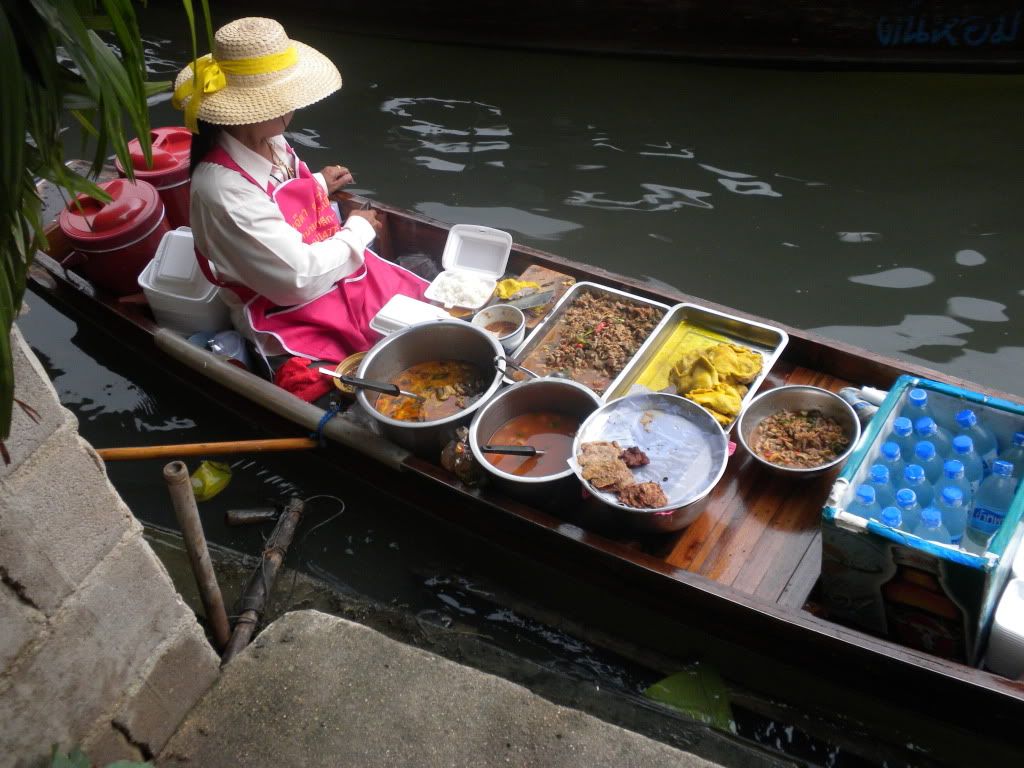
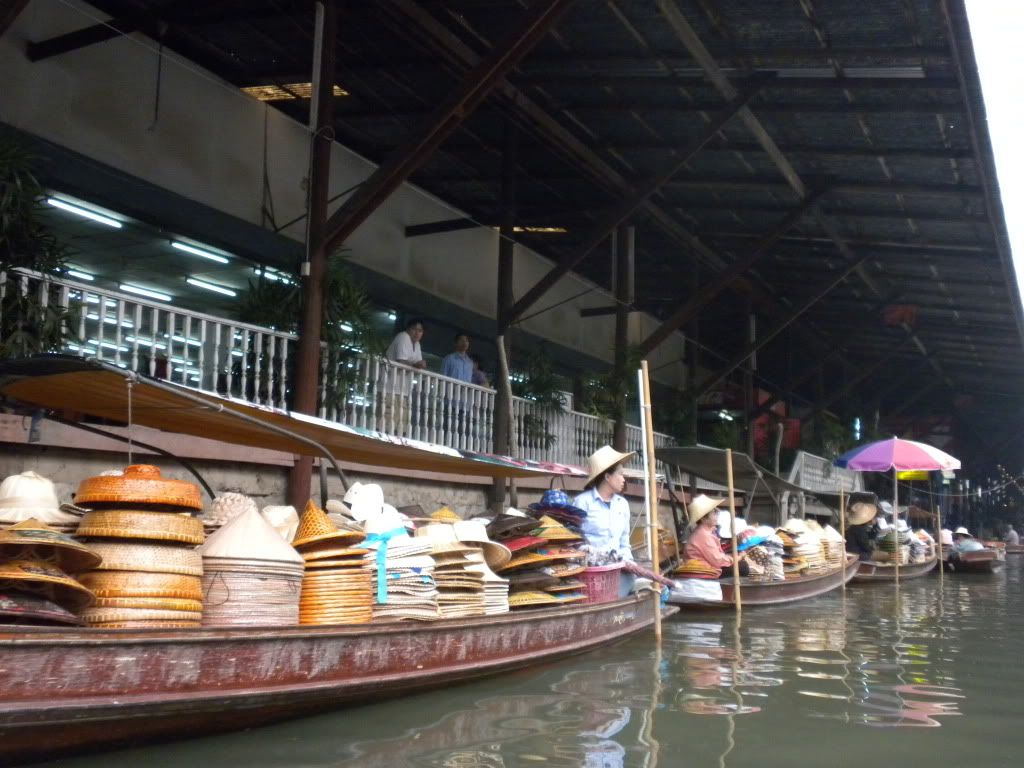
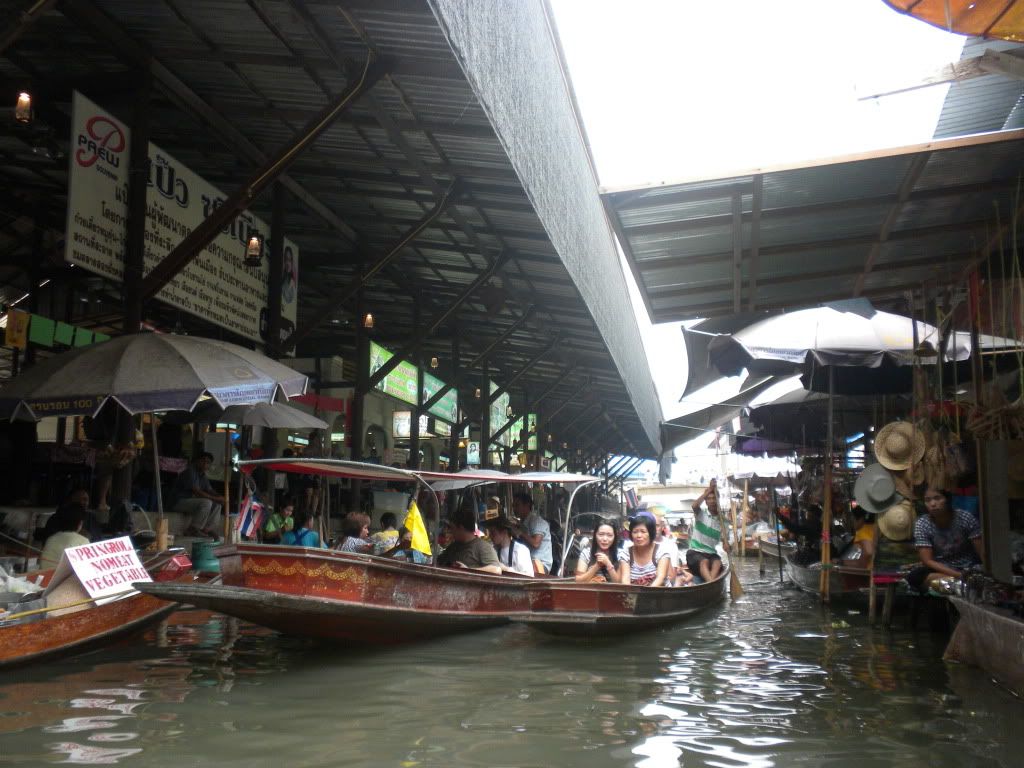
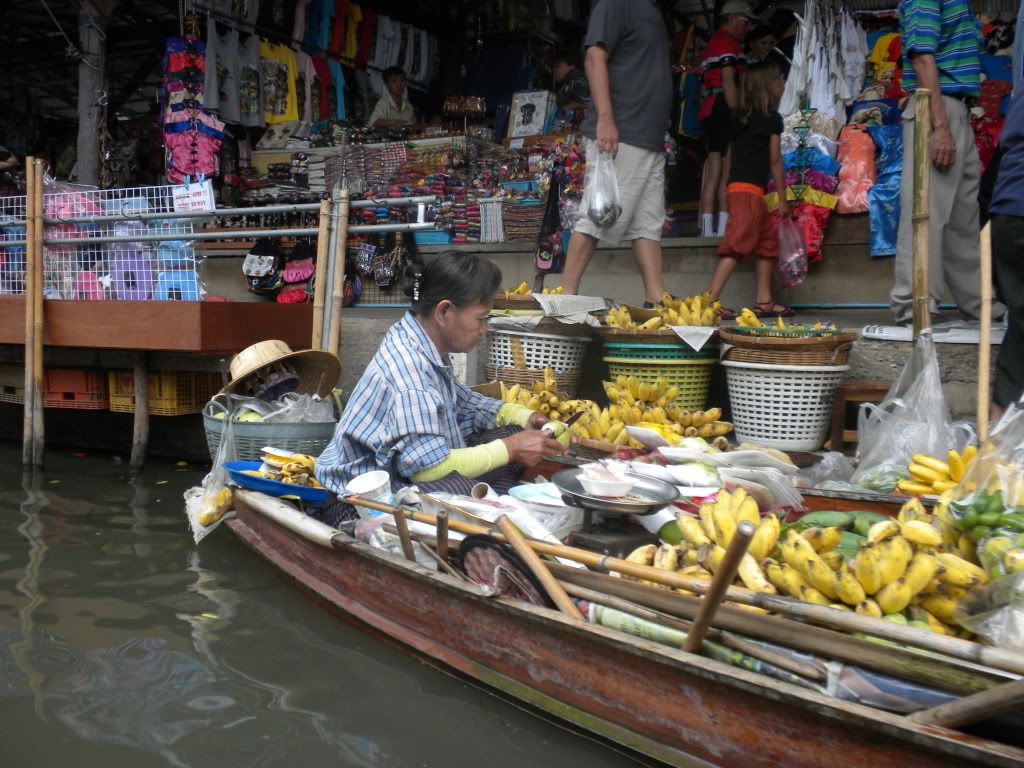
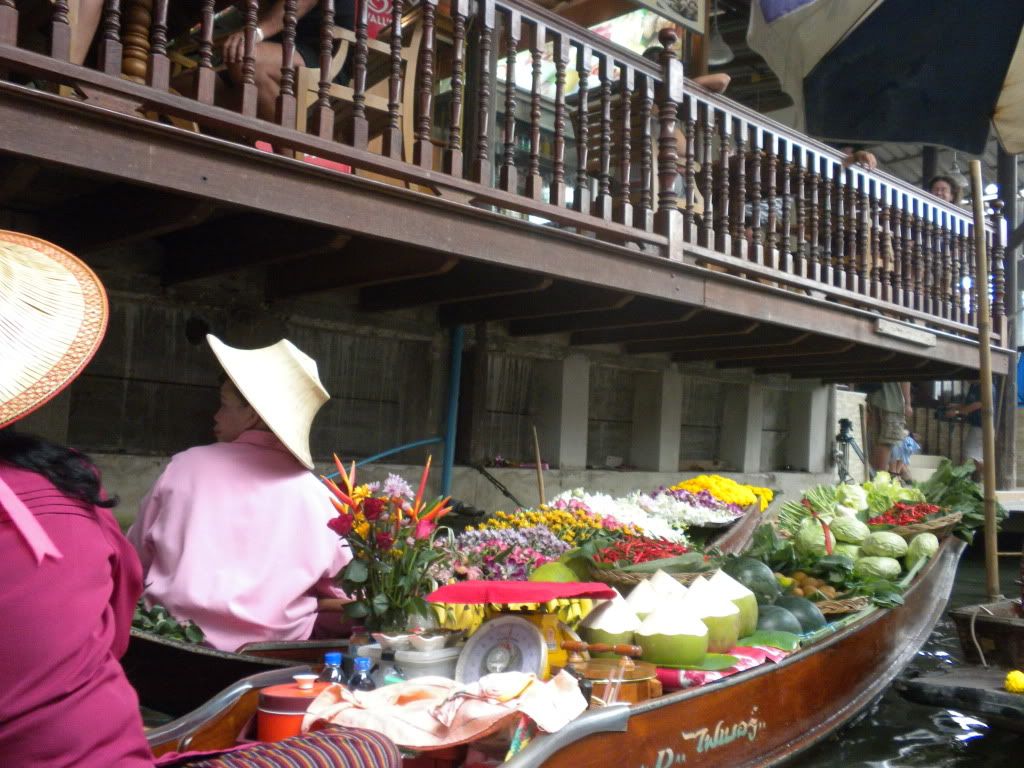
We finished our tour and had about 20 minutes left to grab a bite, before moving on to the next part of the daytrip. Francesca got her chicken-on-a-stick and very tasty coconut on cream (Francesca calls it a ‘Marshmallow fluff’) in paper dough. We even got some for free! I took a few more pictures of the market and off we went! Our guide gave us the option of doing a short trek on elephant back, or a visit to a ‘spectacular’ cobra show. We knew the elephants would come later on our trip and opted for the snakes instead.
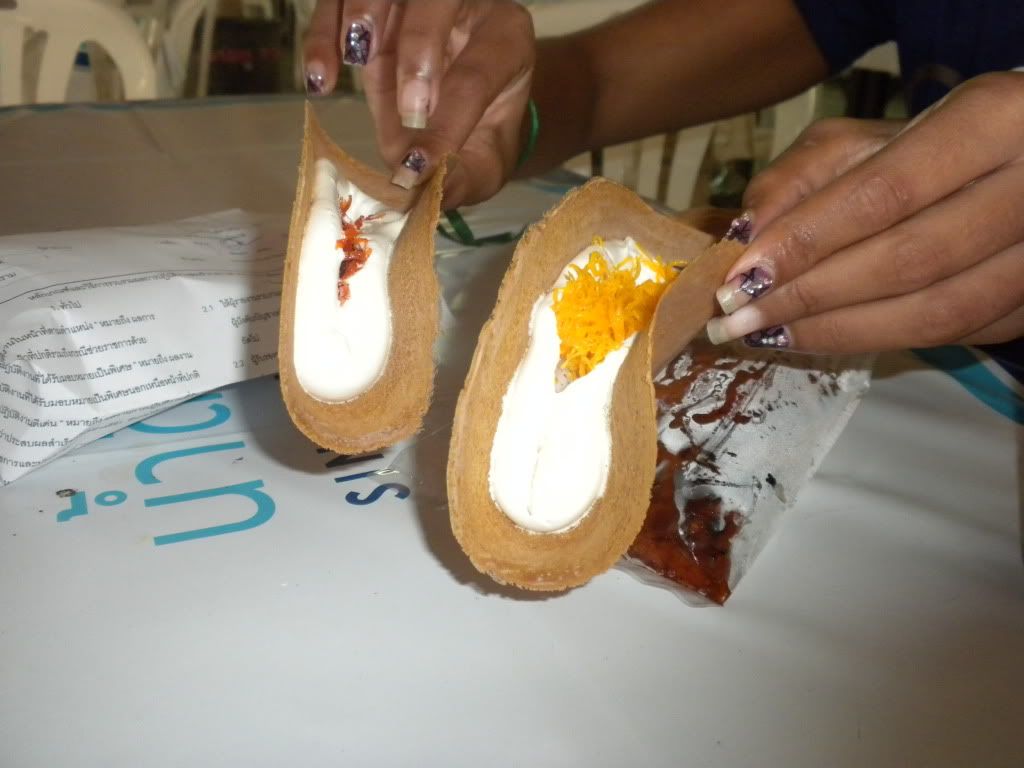
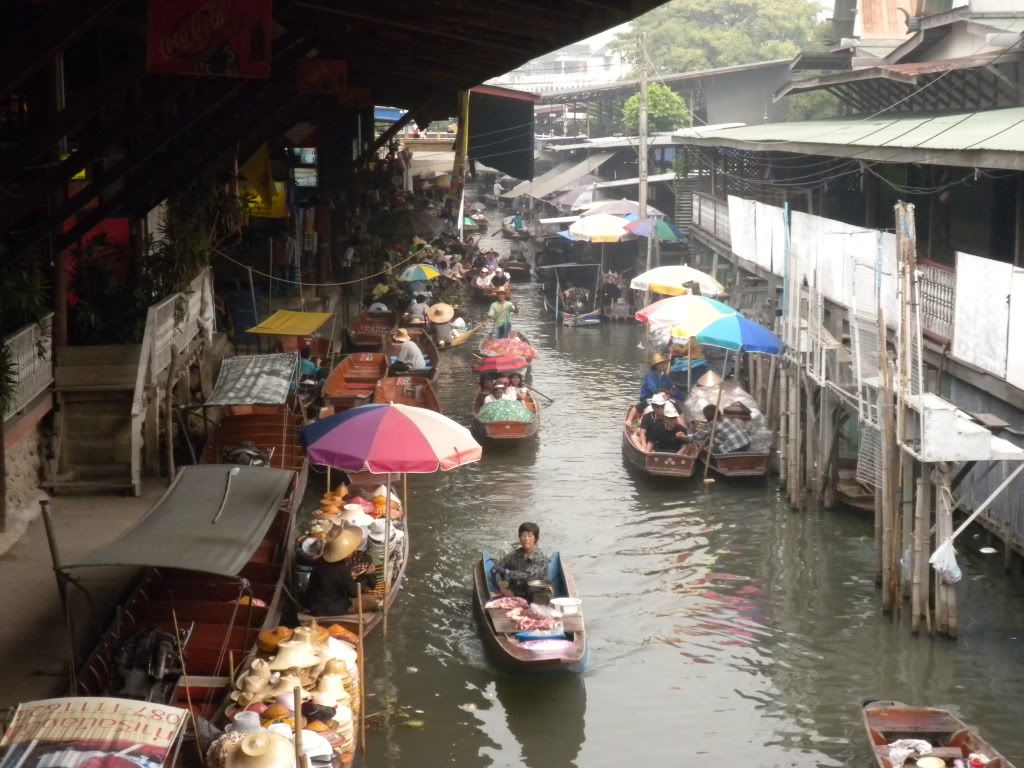
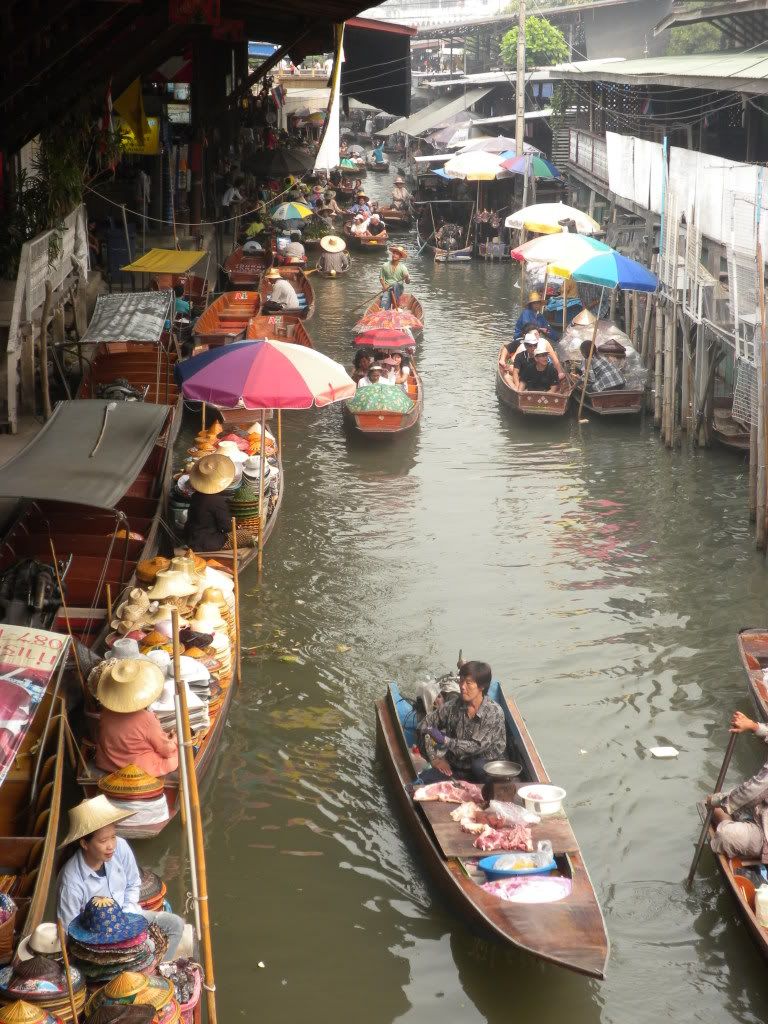
The show had just started, but we got some premium seats in the small arena. We were right on time to see one of the trainers pulling a big cobra out of a bag. He started pissing it off, and the cobra puffed out its signature neck. Handling the very poisonous snake is dangerous business, but the man managed to keep the snake at a distance. He tapped the floor next to it, making it aim for spots that he’d just left. Next, he grabbed the snake and milked it. He was holding a see-through cup and made the snake bite it. We could see the fangs and the poison from up-close as he walked through the audience, cobra in hand. Francesca was especially excited to hear that the male cobra is very well endowed: it has not one, but TWO little love snakes!
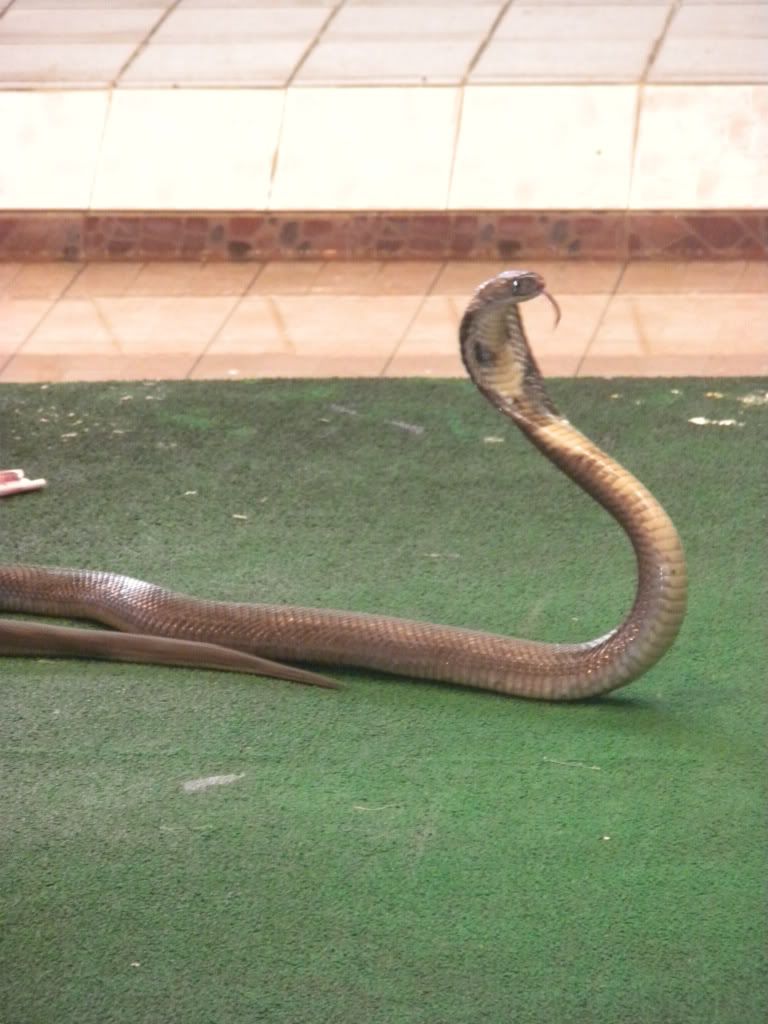
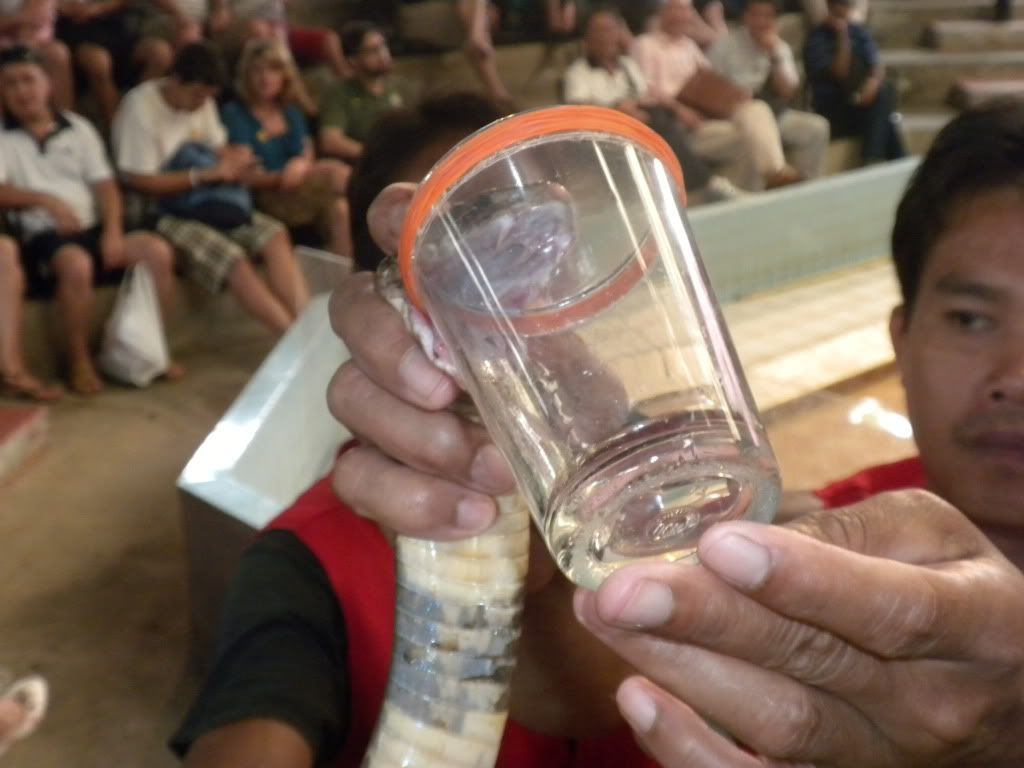
The cobra was bagged and a mongoose in a glass cage was brought out. Another cobra came out of a bag and set loose in the cage. Mongooses are one of the few animals that can handle a cobra in a fight, and we were going to see that live. However, the first cobra showed no interest in the mongoose, and the mongoose chilled out as well. The trainer took the cobra out and grabbed another one. This one proved to be livelier and went after the mongoose. The mongoose dodged it and grabbed its neck, quickly ending the fight. The trainer stepped in and saved the cobra from certain death. Cool fight!
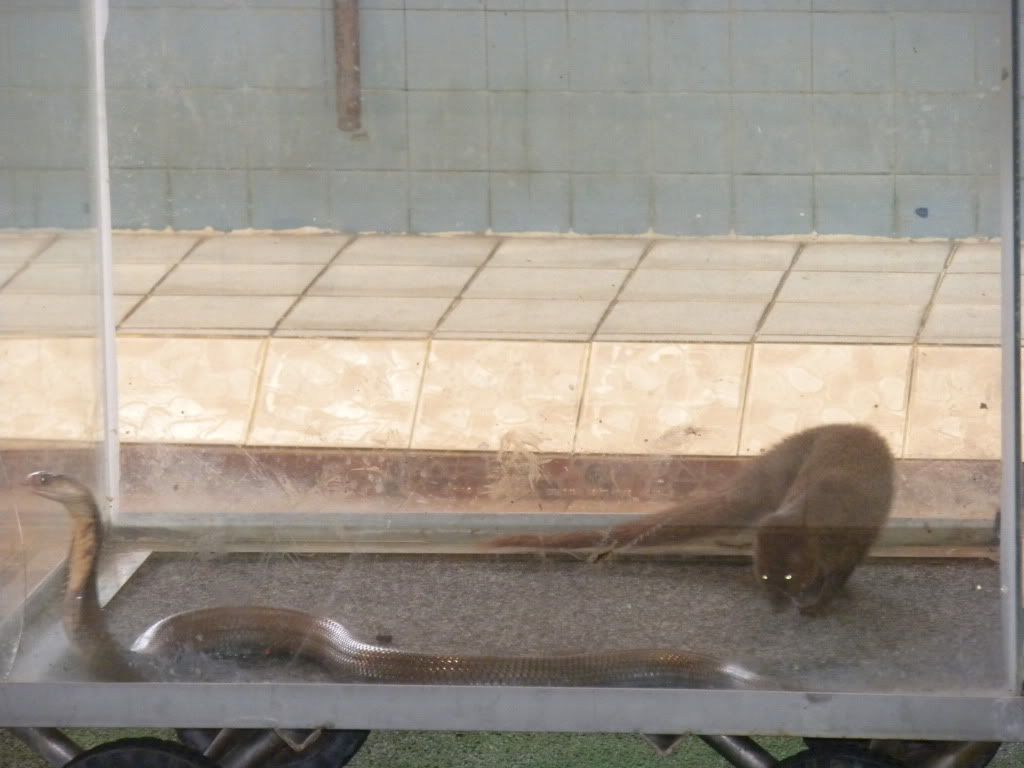
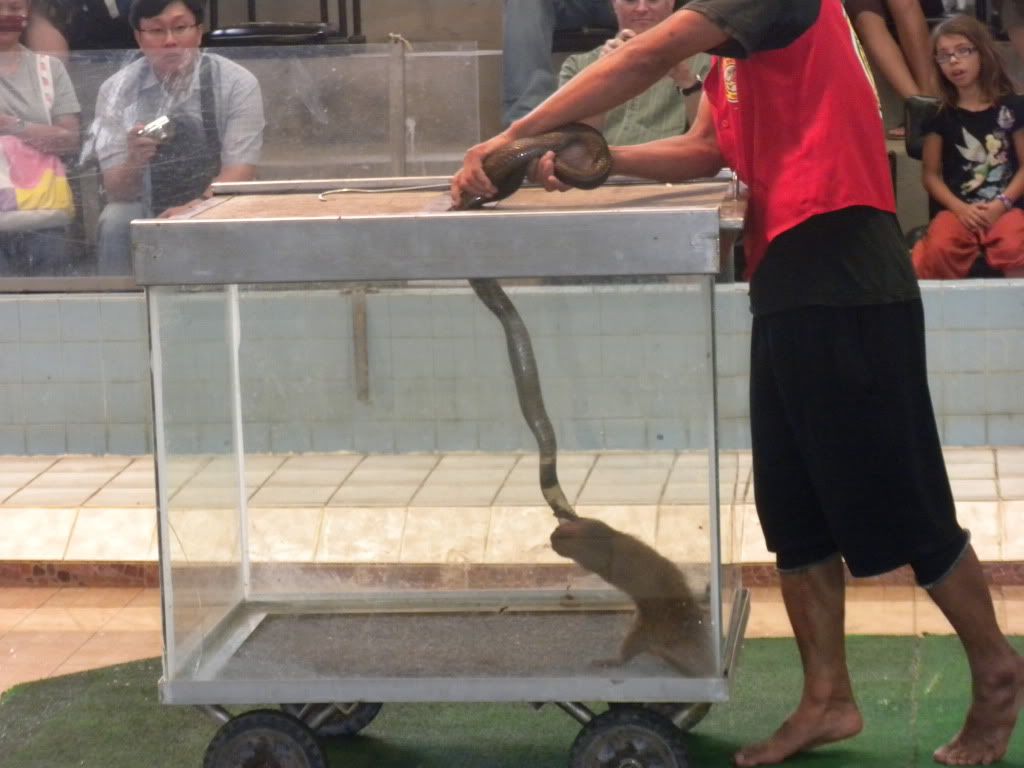
Another guy stepped up and we heard he was going head to head with a jumping snake. Yes, you heard that right! He grabbed the snake, aggravating it and sending it leaping after him. The man had to be very quick on his feet to dodge the amazingly fast snake. Francesca and I then got to see the king of the jungle: a young python. This one was a baby at only 3-4 meters (10-12 ft.), but we heard they can reach lengths of up to 30 meters (100 ft.). I would not want to find that in my back garden! The python was captured by 3 trainers and it was shown to the audience, fangs out. We got to see the impressively long line of fangs that filled the python’s mouth.
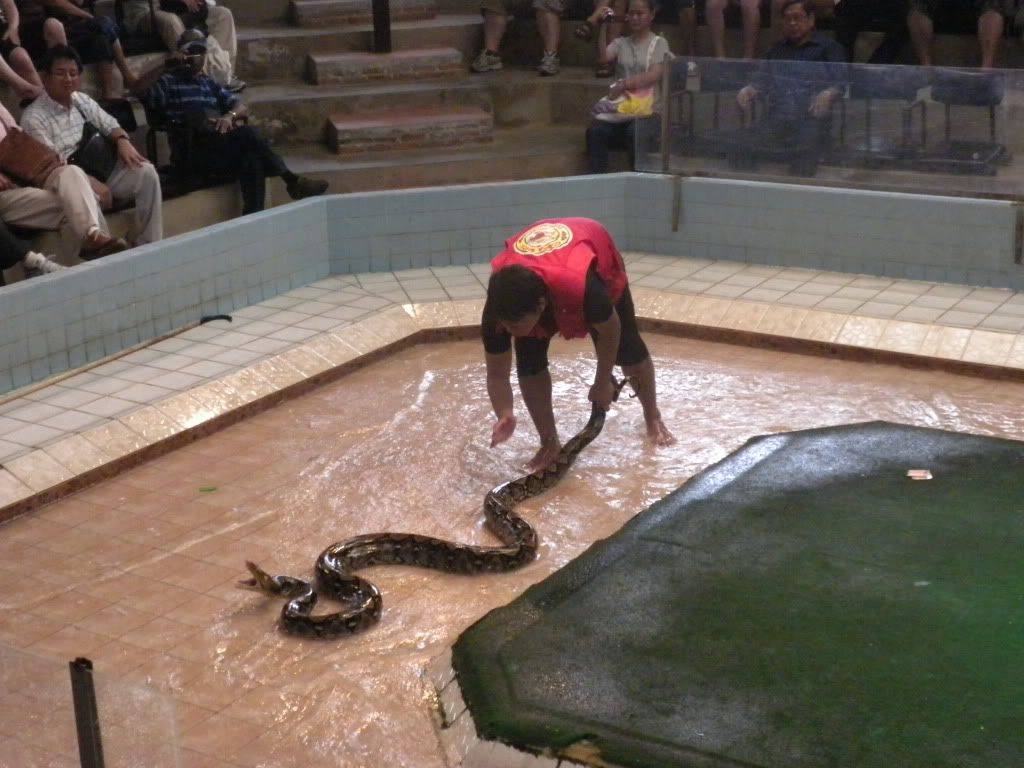
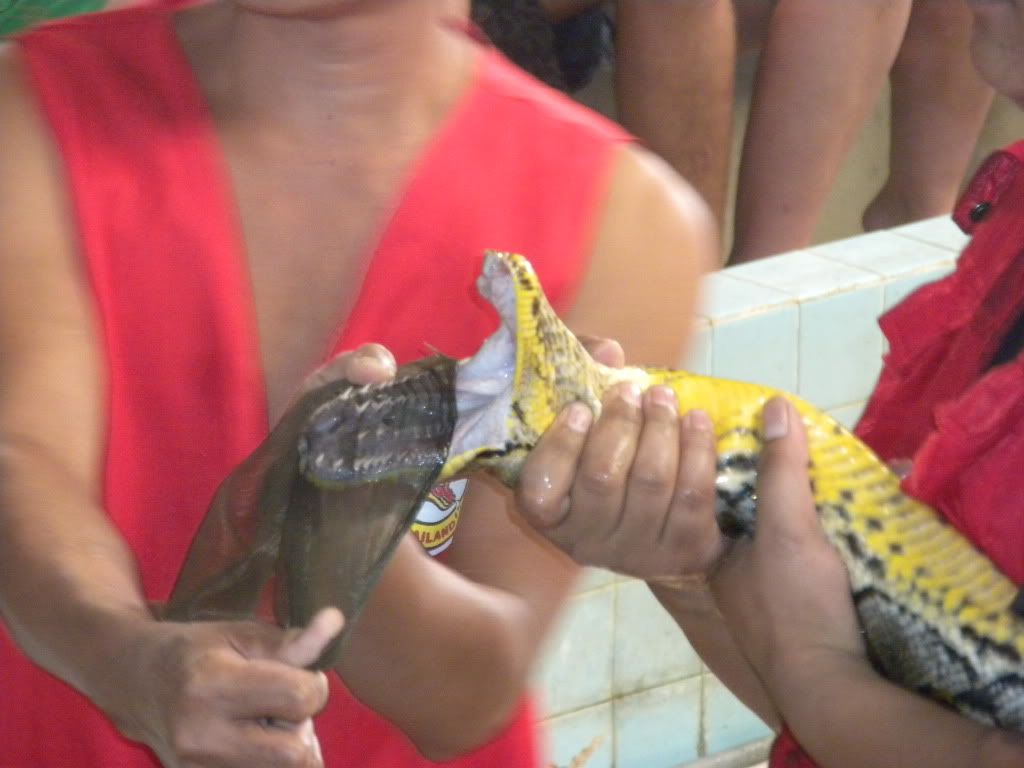
The final act of the afternoon was one trainer versus three poisonous snakes. The man tried to get all 3 of them to attack him at the same time, but truth be told: there was always one that tried to slither off. Still, we had fun watching him controlling and watching the three serpents, always careful not to be bit. The most notable feat came last: the man grabbed one snake in each of his hands, leaving one snake free. What do you think he used to capture it? That’s right, his teeth! It took him a while to get the snake in the right position, but after a few minutes he dived for the snake and had it safely (and unharmed) between his teeth.
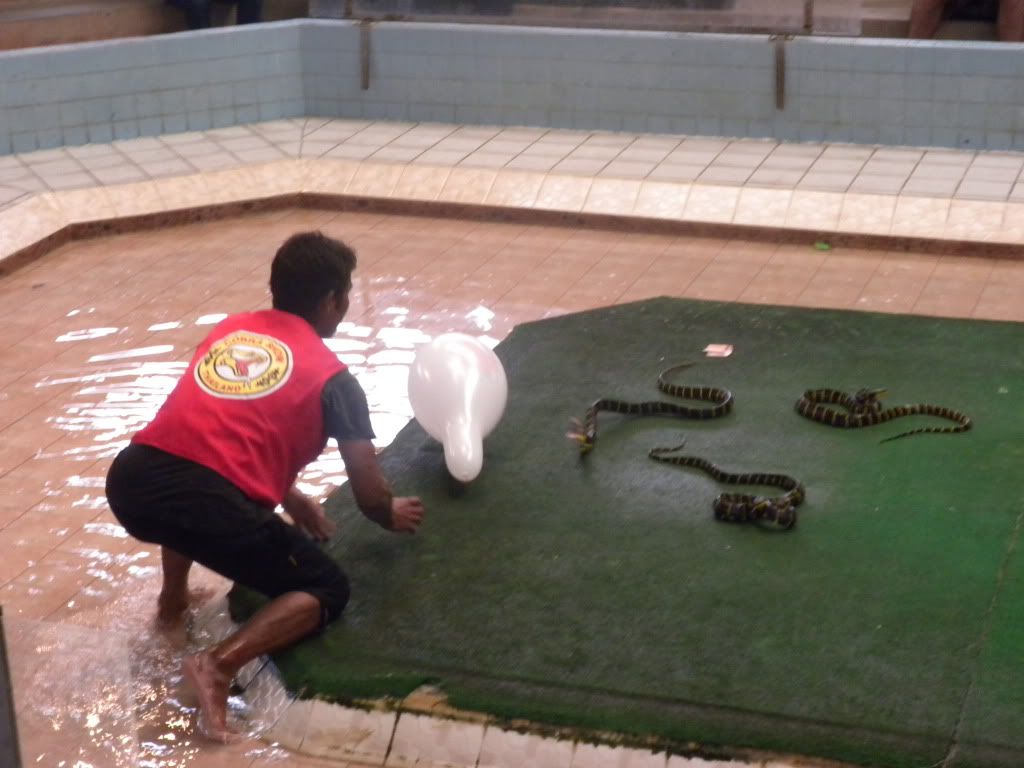
The show ended and Francesca and I walked around the little ‘zoo’ for a while. There was a veritable collection of cobras from Asia present, along with alligators, monitor lizards and a wide variety of other serpents. Francesca found her new favorite snake here: the long-nosed green snake. There must have been over a 100 in the small enclosure. Our guide then dragged us off – we had to go to the next destination. This destination was a little batik workshop. They tried to sell us wares, but we sneaked off and relaxed for a while.
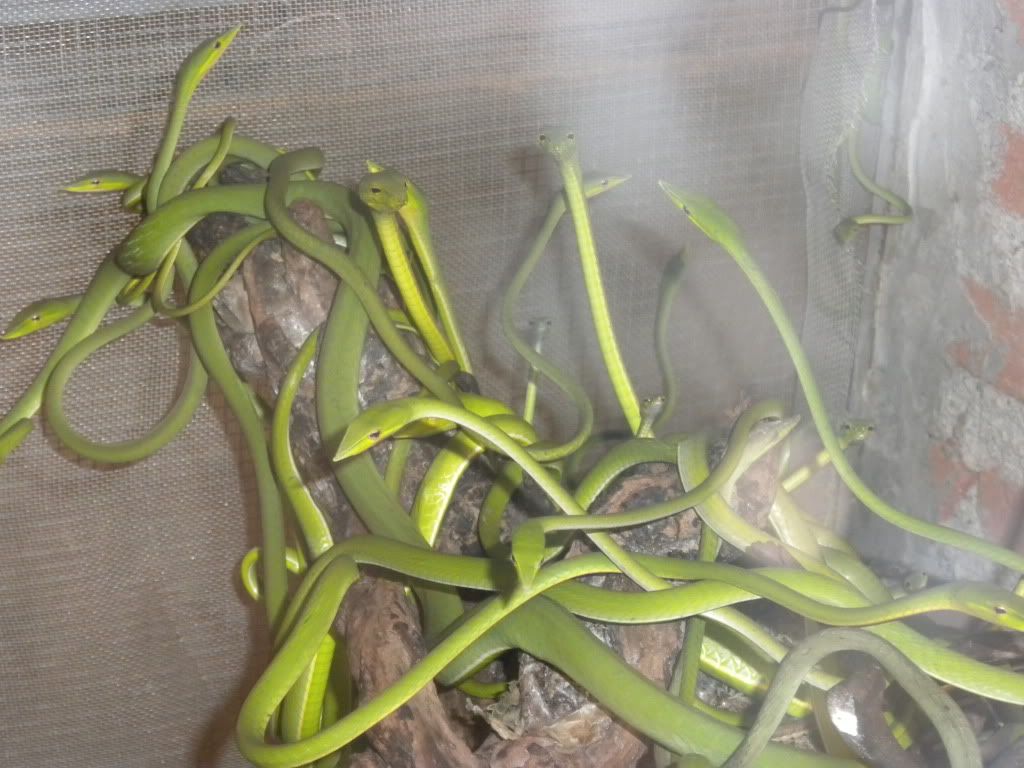
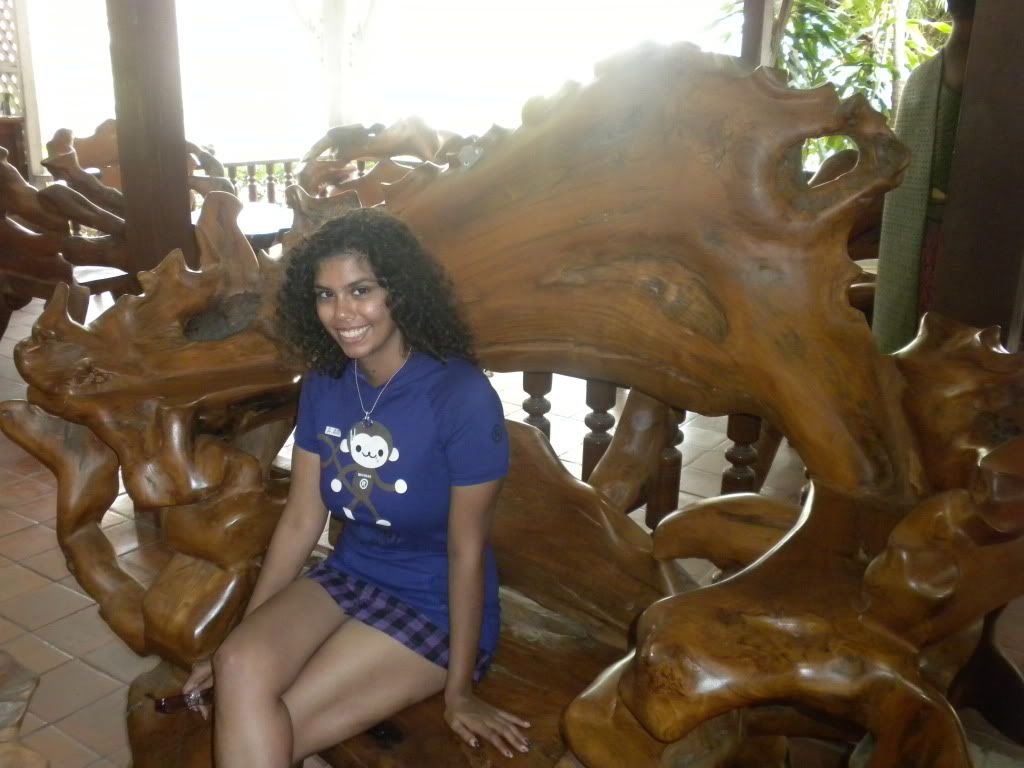
Lunch was coming up and we stopped along the road somewhere, food waiting for us. A whole table filled with rice, sweet and sour chicken, vegetables and soy sauce pork was ready to be eaten when we arrived. It tasted pretty good and certainly filled us up. Our guide took us apart and gave us a choice: we could go see the Tiger Temple, a temple where monks hold tigers, or the River Kwae Bridge and Museum. I was much more excited about the latter and we told the guide to take us there, whilst the rest of our group went to the Tiger Temple.
Here's a little information about the bridge in case you know little about it.
According to the Commonwealth War Graves Commission:"The notorious Burma-Siam railway, built by Commonwealth, Dutch and American prisoners of war, was a Japanese project driven by the need for improved communications to support the large Japanese army in Burma. During its construction, approximately 13,000 prisoners of war died and were buried along the railway. An estimated 80,000 to 100,000 civilians also died in the course of the project, chiefly forced labour brought from Malaya and the Dutch East Indies, or conscripted in Siam (Thailand) and Burma (Myanmar). Two labour forces, one based in Siam and the other in Burma worked from opposite ends of the line towards the centre."
Also, both spellings 'Kwae' and 'Kwai' are accepted. For the sake of the post I've used 'Kwae' as the standard spelling.
We got dropped off and told we had about two hours to explore the whole place. It was quite big, so we started with the museum. Francesca and I were surprised to find a lot of information on the kingdoms that had ruled the area. We glanced at everything, but since we didn’t come here to learn more about ancient history F. and I chose not to stick around for too long. Instead, we climbed to the top of the museum and found ourselves on a platform overlooking the River Kwae and the Bridge. Quite cool! We took some pictures and headed back down to find the War Museum. It happened to be across from the local museum, what a surprise. Before we entered I spotted an iguana on the floor, sitting quietly. Somebody else was petting it, so I made sure to touch its leathery skin and have Francesca do the same. It freaked her out a little, but she managed to overcome her fears and had a feel as well.
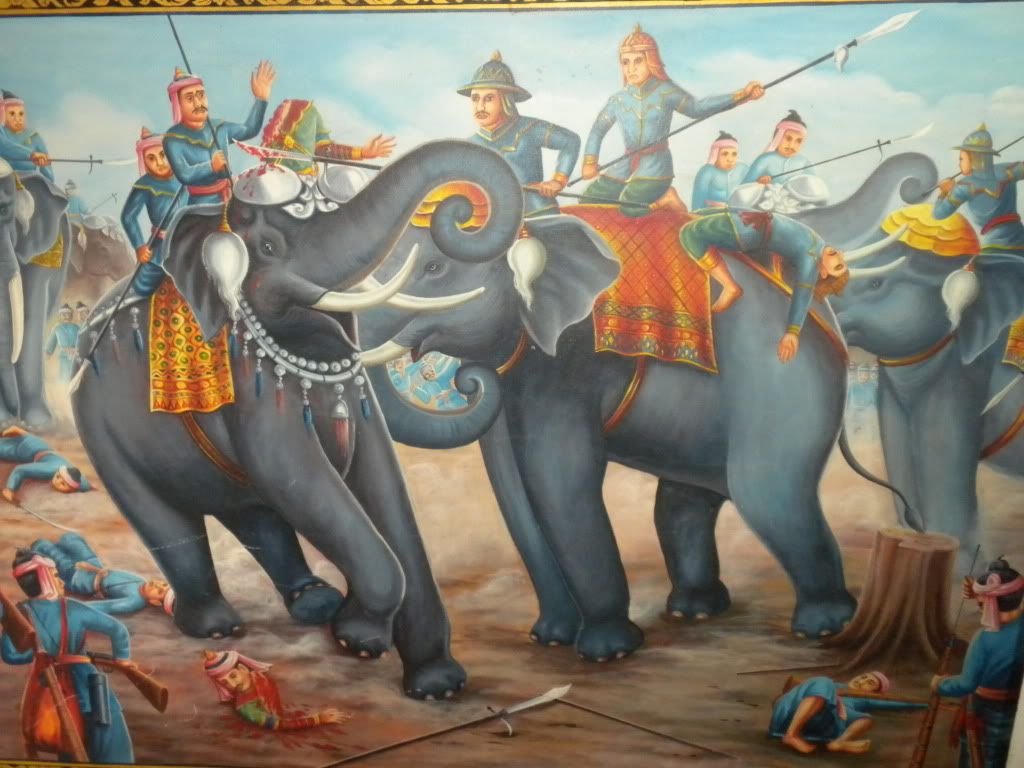

Before entering the photo exhibition, Francesca spotted a large WWII bomb that had not detonated. Inside, we found a large selection of handguns (Lugers), rifles (Kars) and bones of some of the people that did not survive the war. The photos covered the walls and were quite telling. Skinny prisoners-of-war in cramped spaces looking at the camera with hollow eyes, pictures of the bridge under construction, as well as a random selection of drawings of happenings in Thai history. Even more gruesome were the remains of 106 prisoners who died during the war, and a coffin of an American soldier.
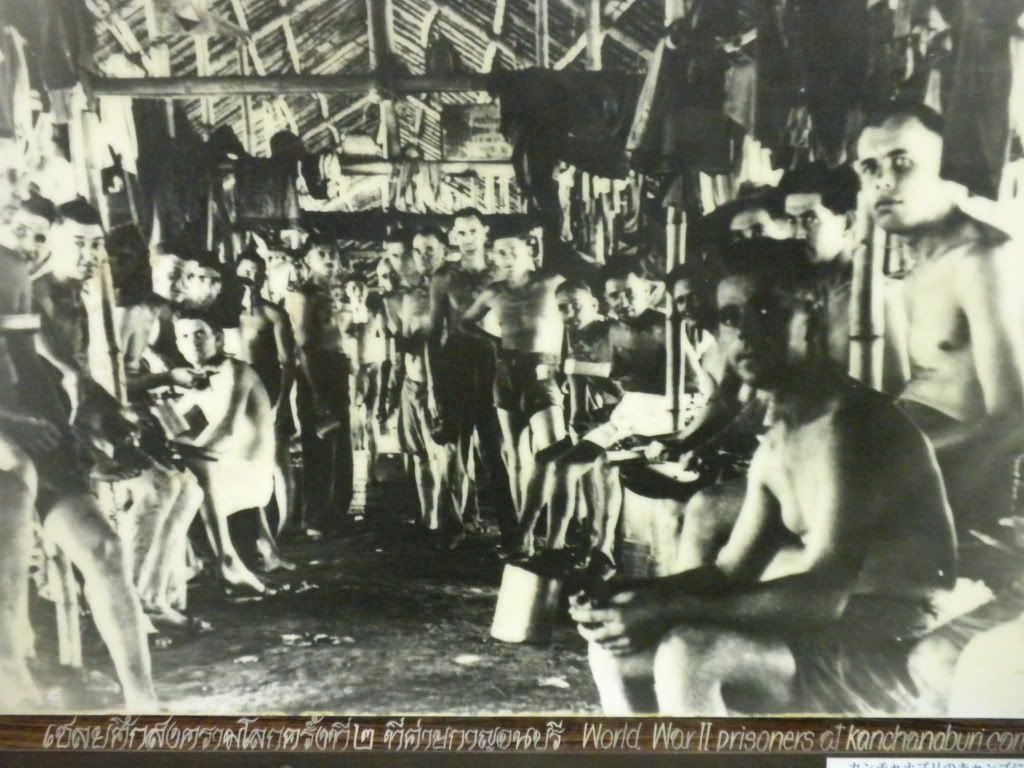
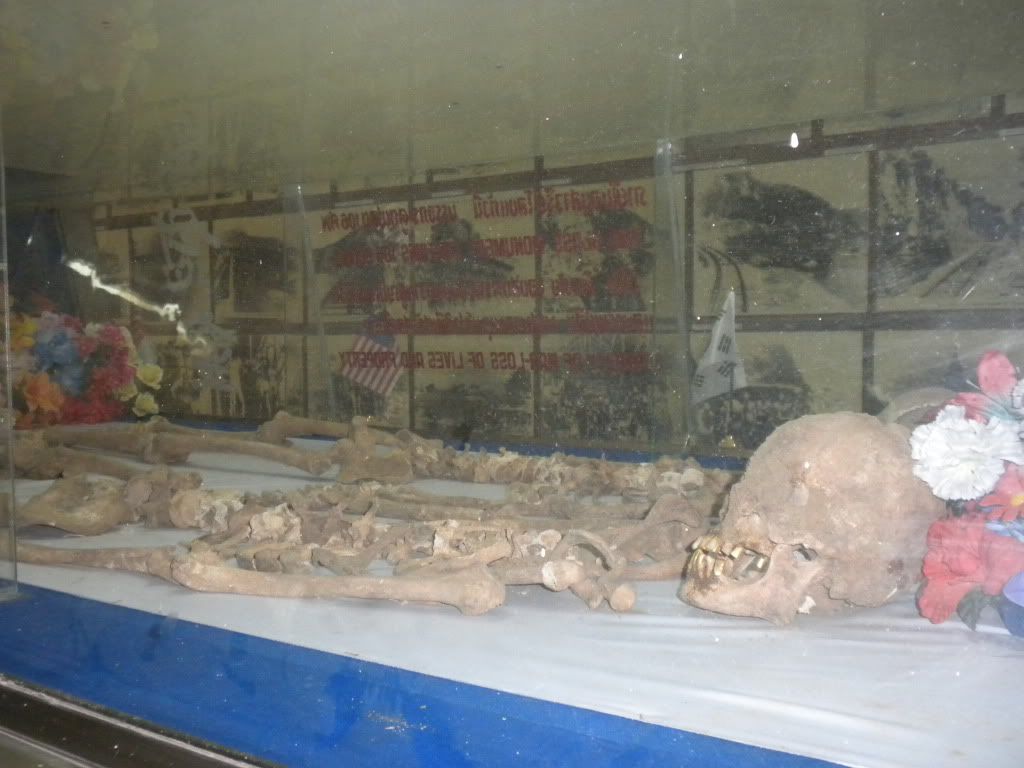
We went outside and more or less found the rest of the museum down some stairs. The signposting was very ‘less is more,’ so we were quite lucky to find it. The first thing we noticed was the availability of genuine British helmets from WWII for a mere 90 USD. The walls were covered in stories of the end of ‘The Bridge over the River Kwae.’ Francesca and I had watched the classic ‘Bridge over the River Kwai’ just a few weeks ago, and we learned that there are quite a few inconsistencies between the movie and the actual facts. For example, there were almost as many Dutch prisoners as there were British. We also read how the Japanese army tried to prevent the bombing of the bridge by sending out the prisoners onto the bridge. However, the Allies attacked regardless, killing many of their Allied comrades in the process - hence the nickname ‘The Death Railway.’ We spotted an example of the wagons prisoners were kept in, as well as the remains of the original – much smaller – bridge over the Kwae.
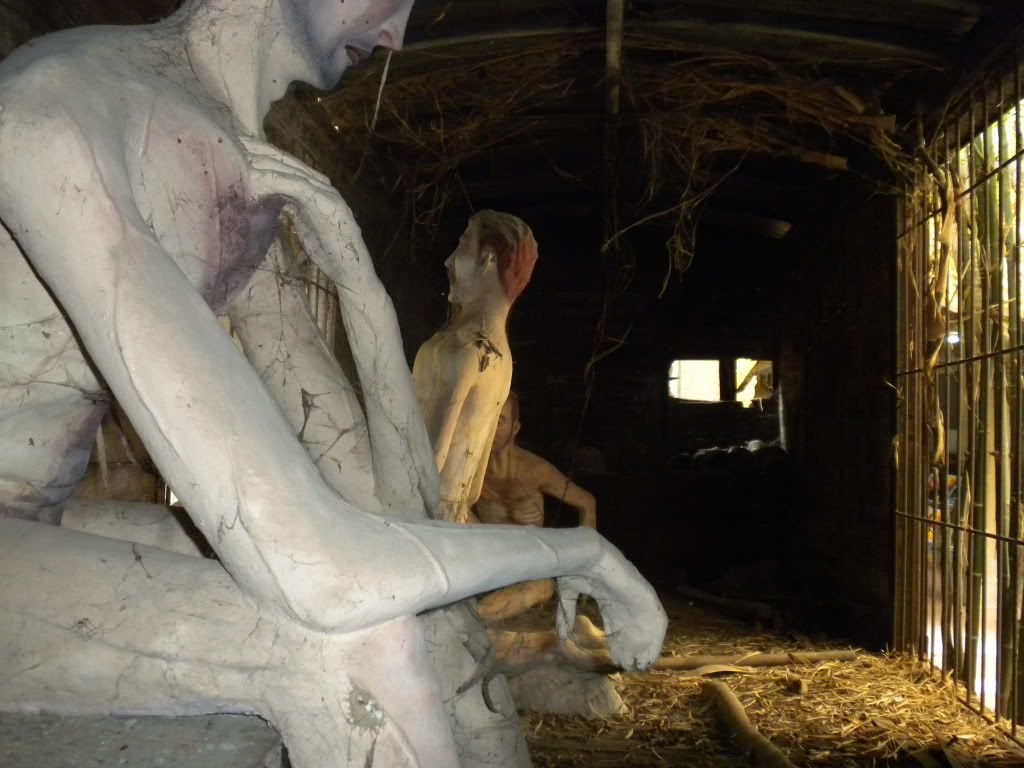
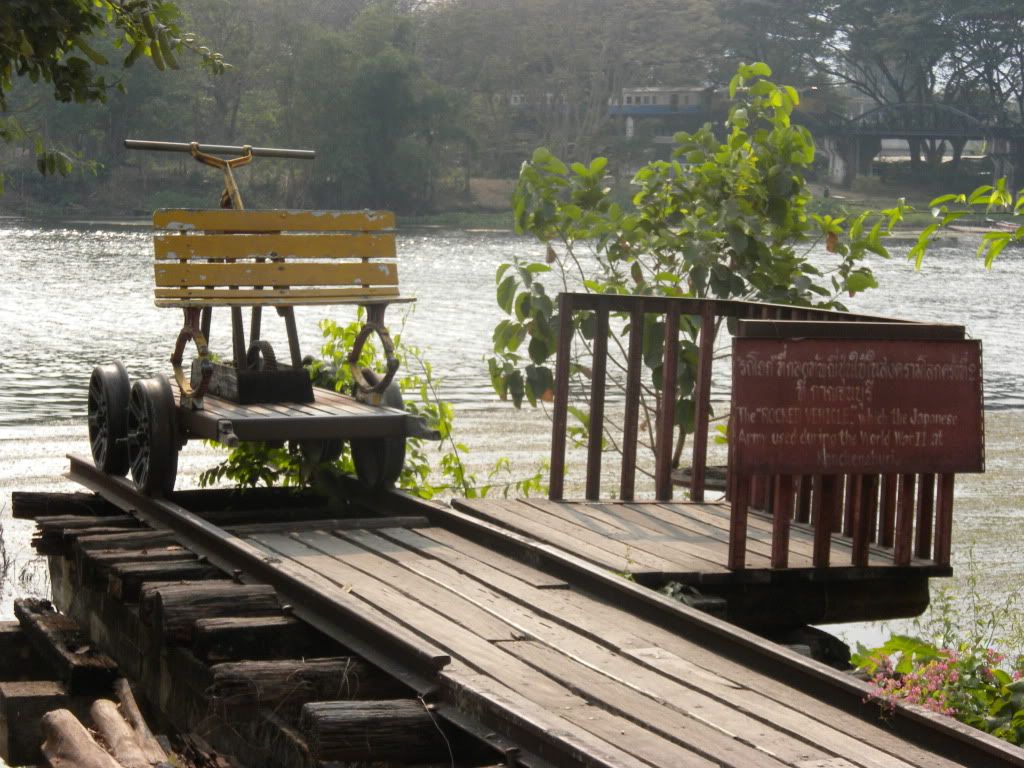
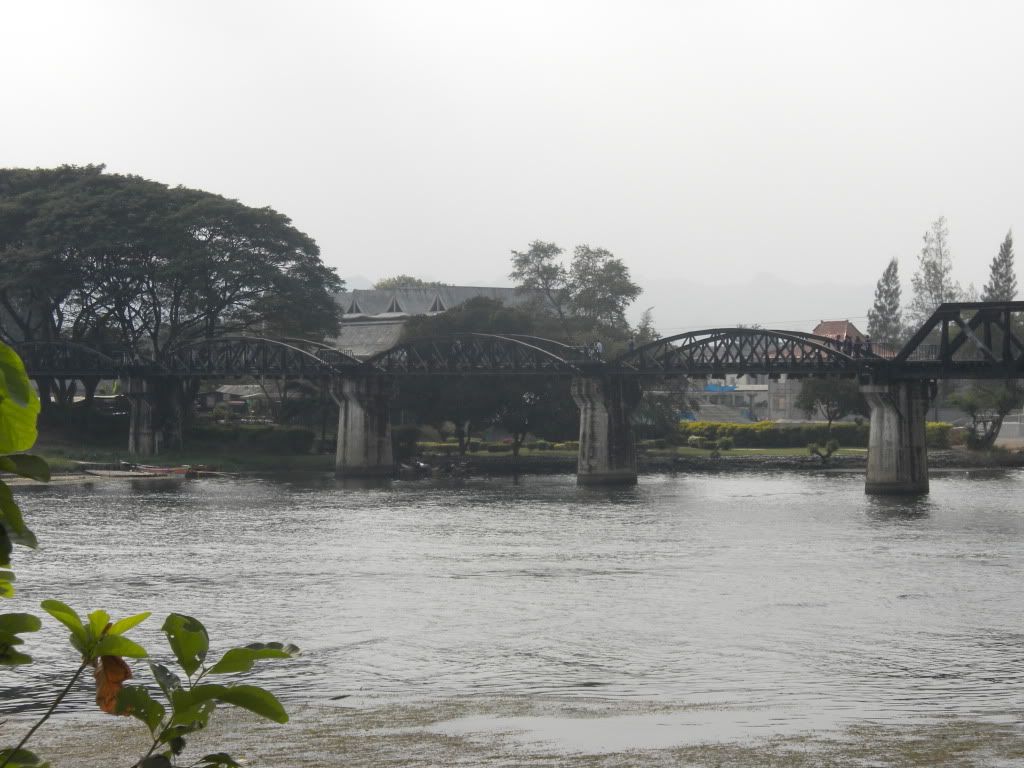
It was time to check out the bridge from up close! Francesca and I stopped at a rusty old train, once used on the tracks over the Kwae. On our way to the bridge I spotted a local with his young leopard, lying around on a table. For a few Baht we could take a picture with it. I just took one from a distance, whilst the man was busy talking to someone else! We got near the bridge and saw we could just walk all the way to the other end. We started our little journey on the tracks, crossing a bridge that cost the lives of so many men not so long ago. A train is still used to show the lazier tourist what the bridge is all about, and we actually had to jump on a safety platform or two to safe our dear lives. We walked to the other end, taking some nice pictures of the bridge and surroundings, before returning to the start.
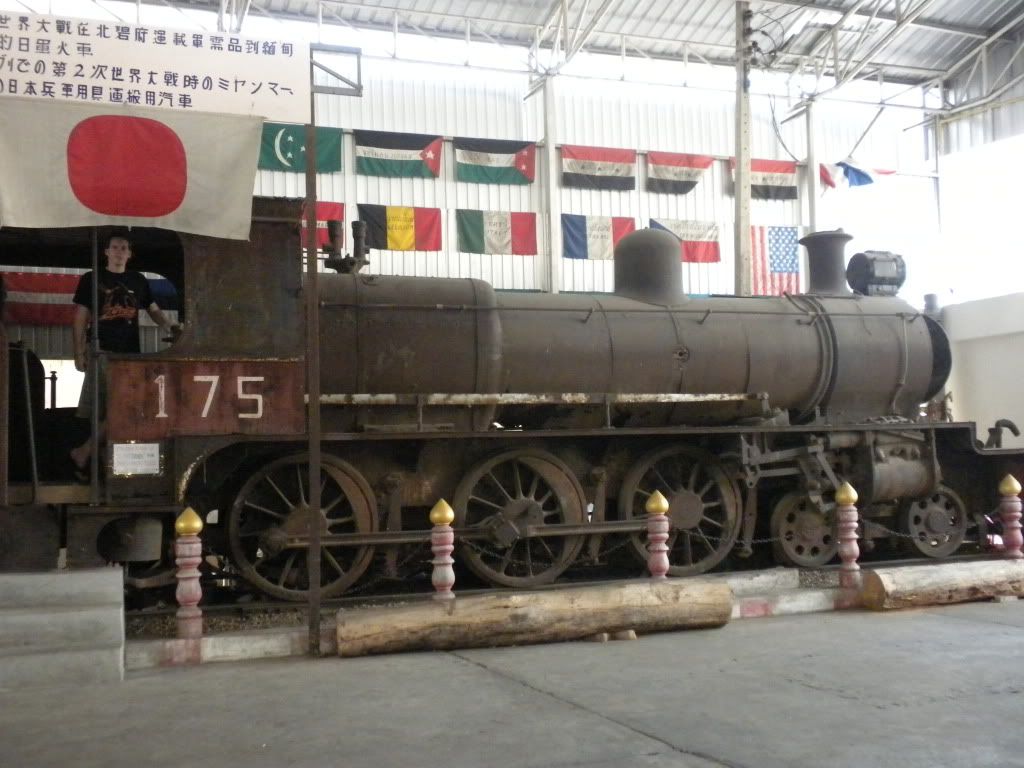
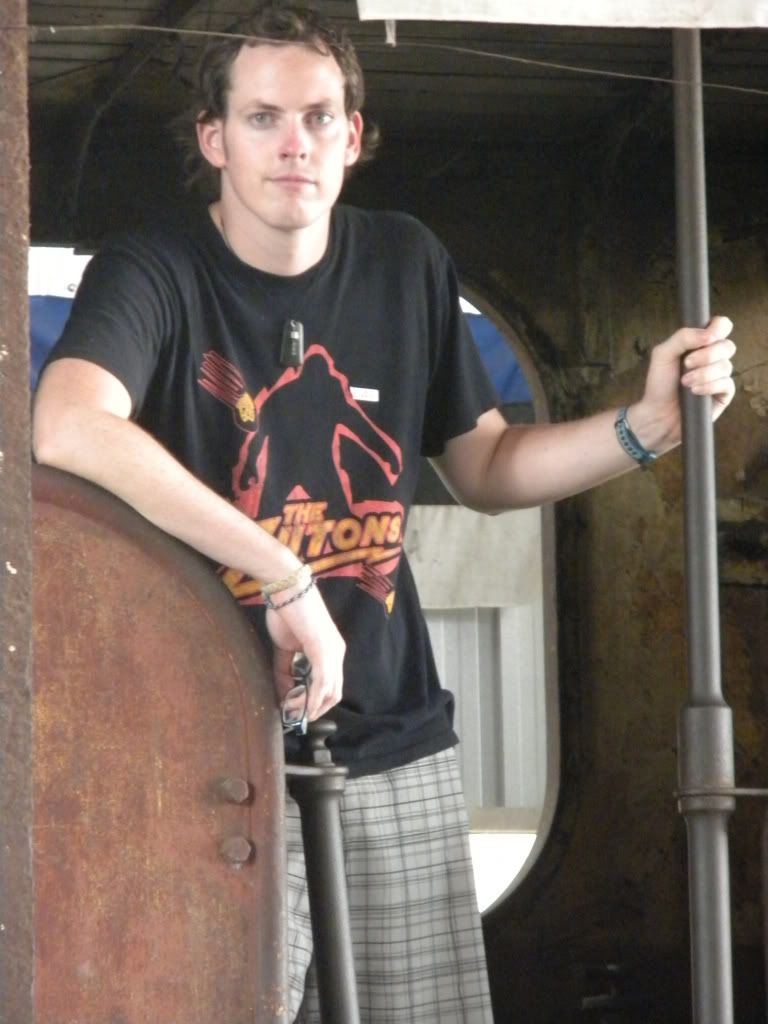
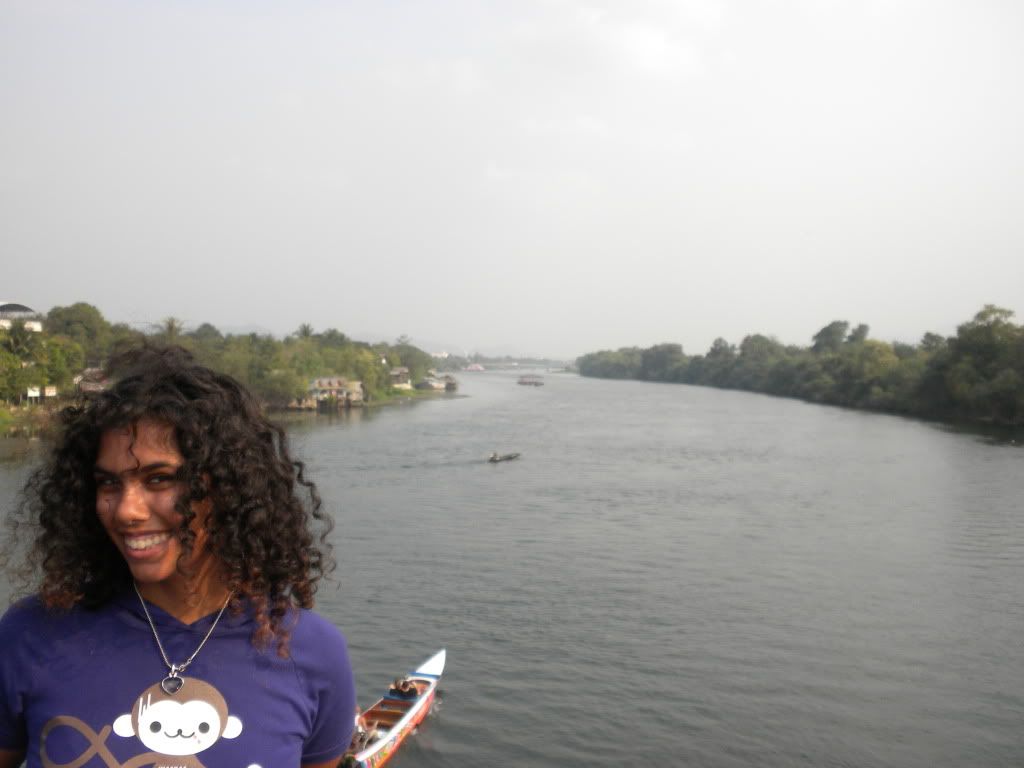
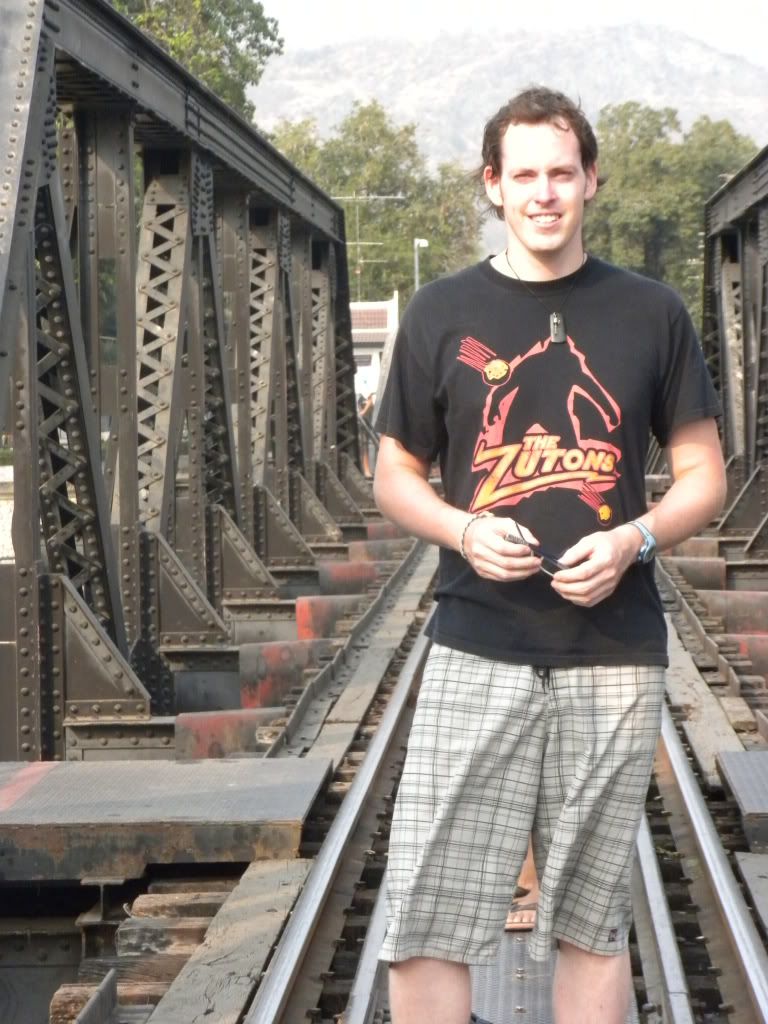
Here, we picked up two ice-creams and soon spotted our tour group. They had just arrived and had some time to check out the bridge as well. Francesca and I had a look at the WarWall, dedicated to the casualties of the war, either by weapon or by labor. We also had a quick look in a jewelry store. Finally, our guide picked us up and it was time for the long drive back to Bangkok. A good three hours later we were finally back, after having been dropped off at the wrong BTS station by our kind driver. The detour aside, a very successful day! I packed up our backpacks and got everything ready for departure at 4 in the morning.
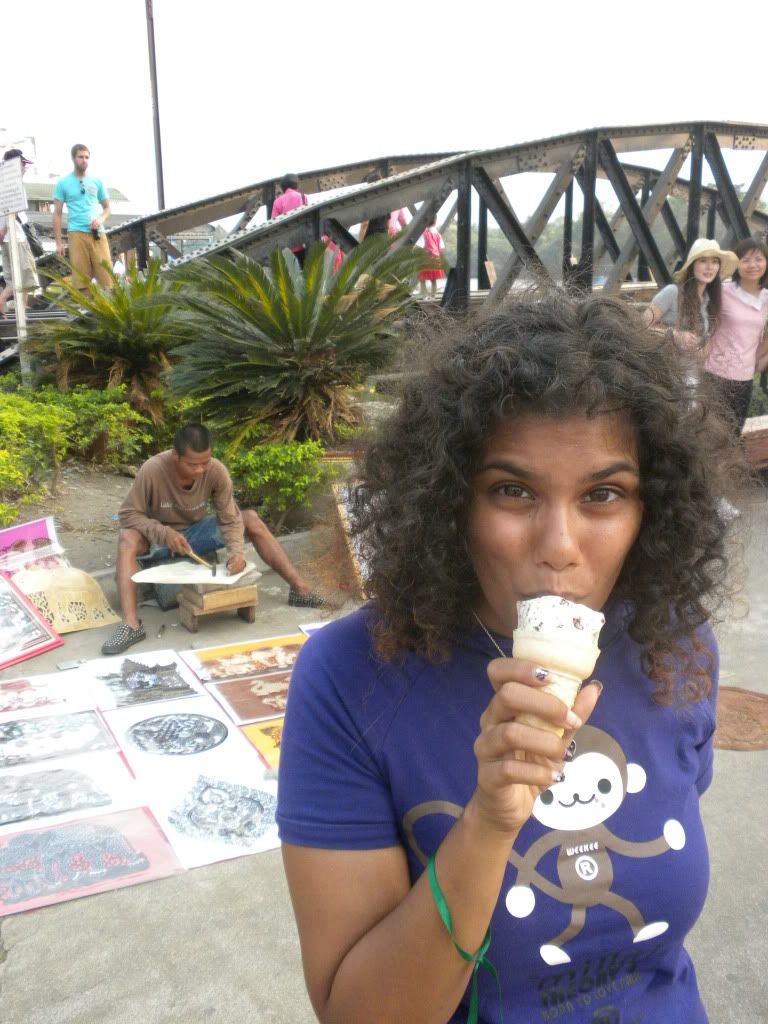
Tuesday, January 12, 2010
Ladyboys and go-go bars!
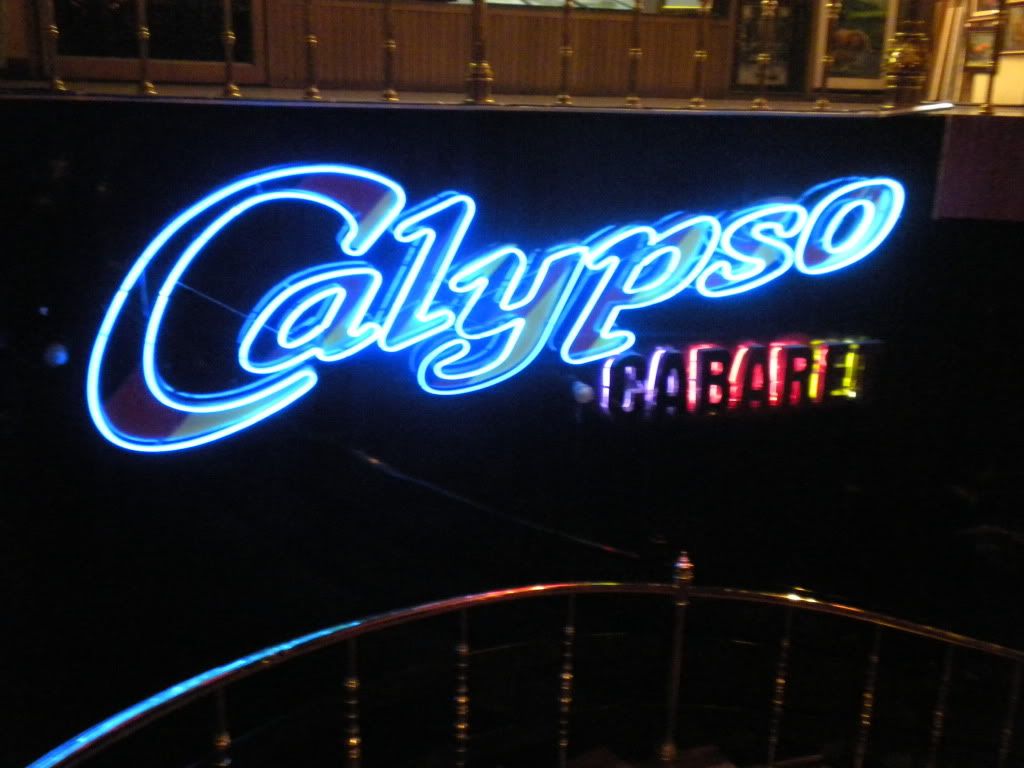
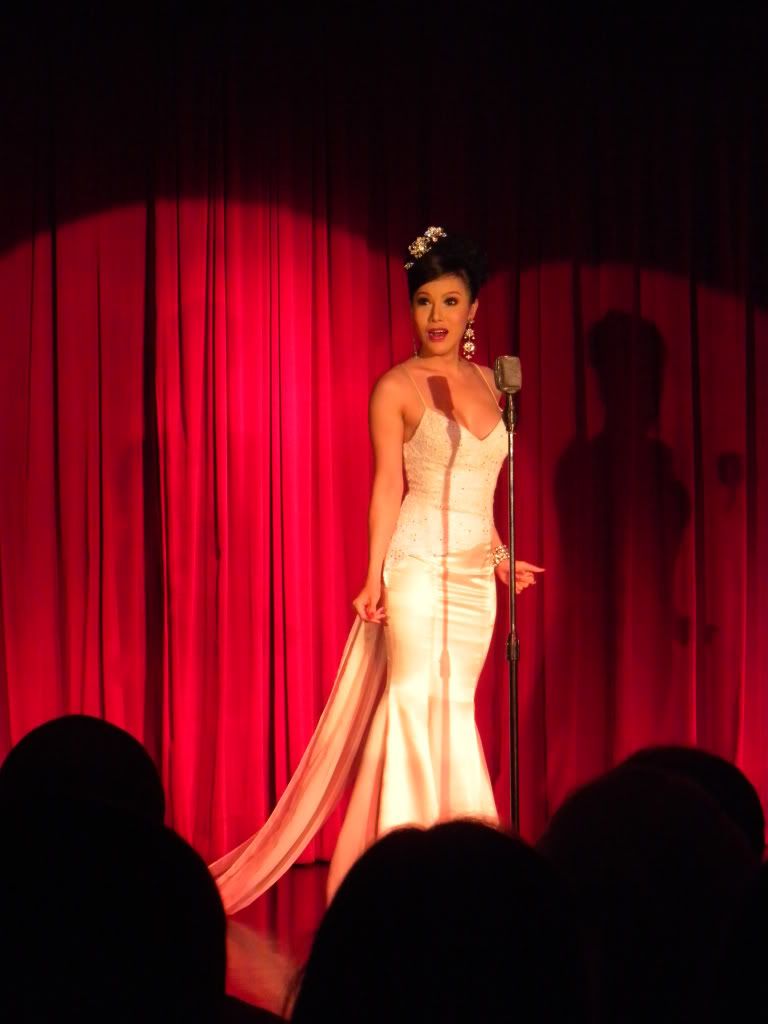

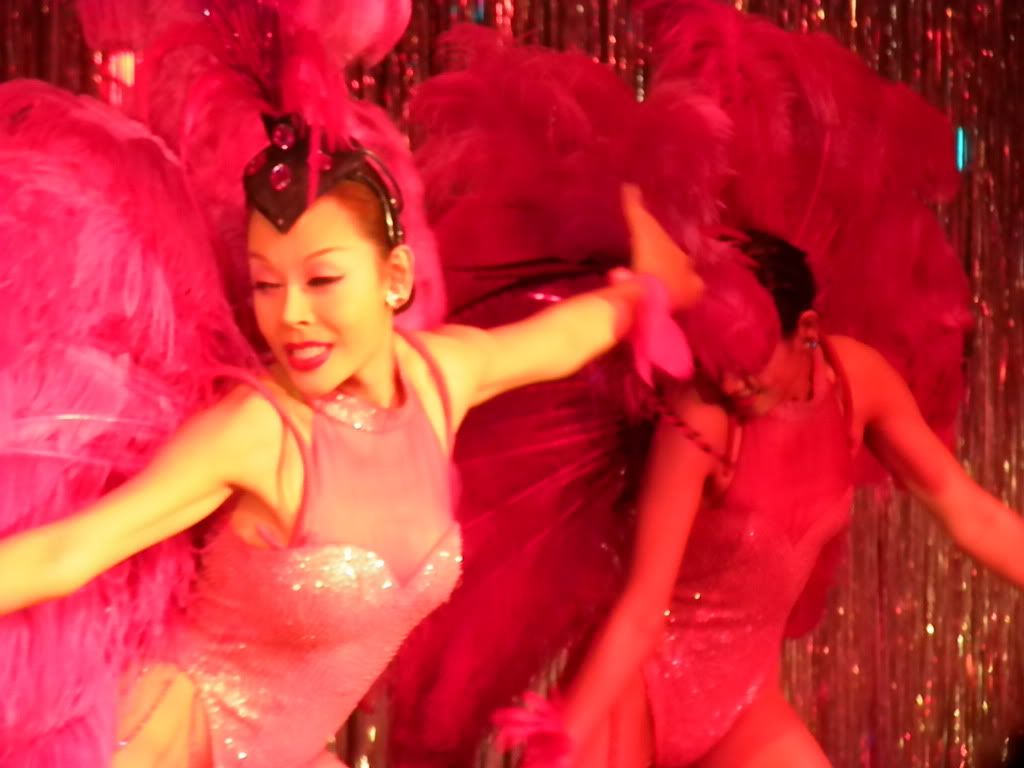
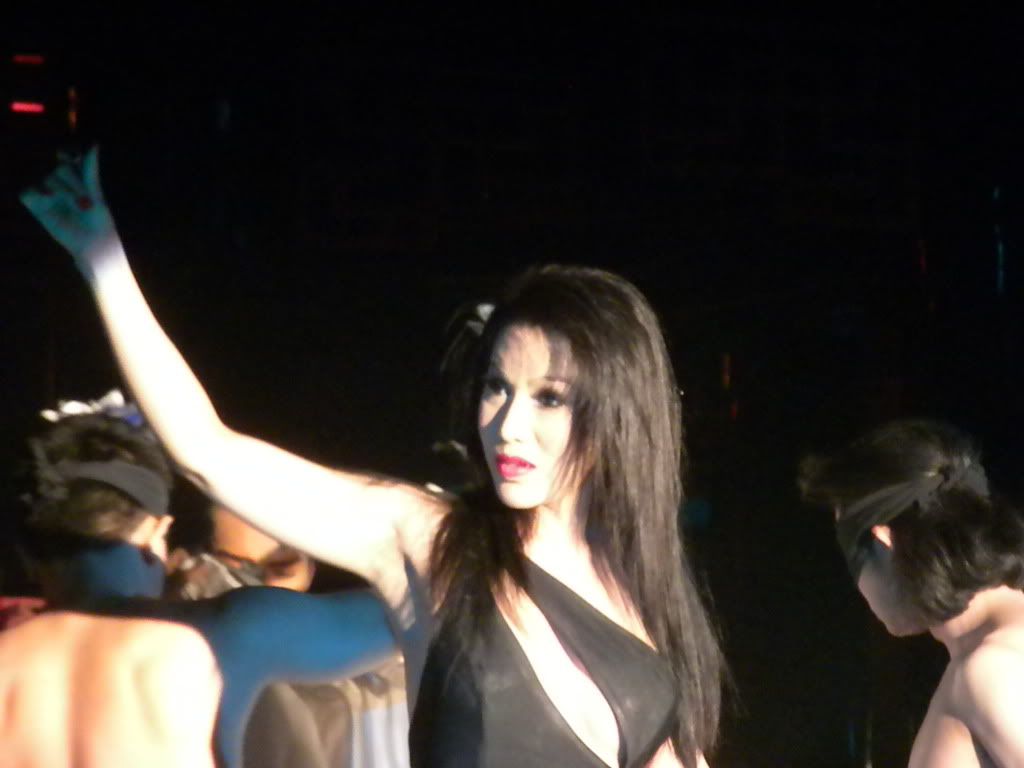
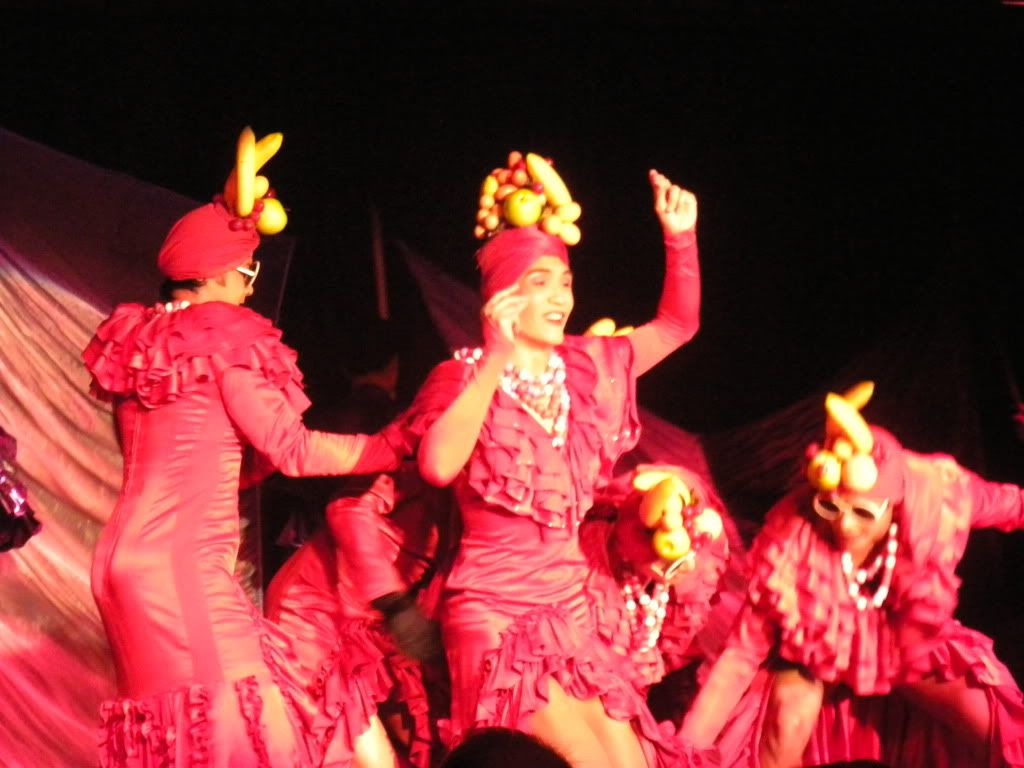
While most of the songs were ‘glamour songs,’ there were some acts purely for comic relief. One of the ladyboys dressed up in a kimono and targeted a male audience member in the front. She plopped down in his lap and sang to him, to his wife’s amusement. At one point, the male performers joined their ladyboy counterparts on stage and danced with them, wearing identical outfits. It was a great show, and Henk and I got some pictures with the performers afterwards – let us know which one(s) you think could fool you!
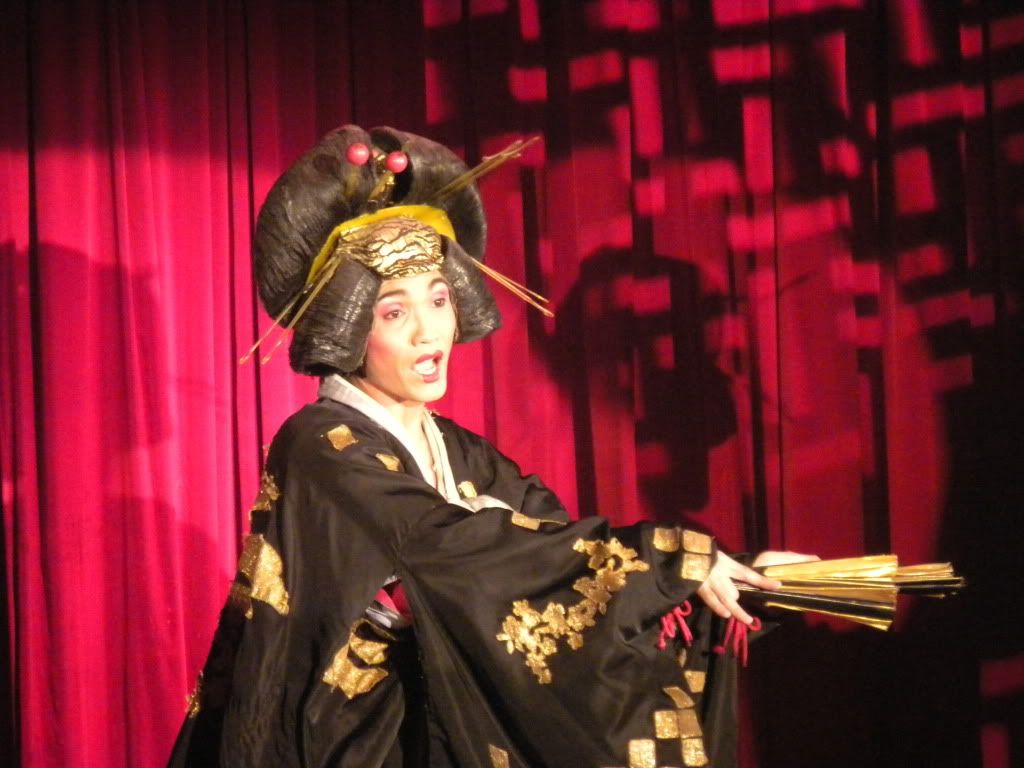

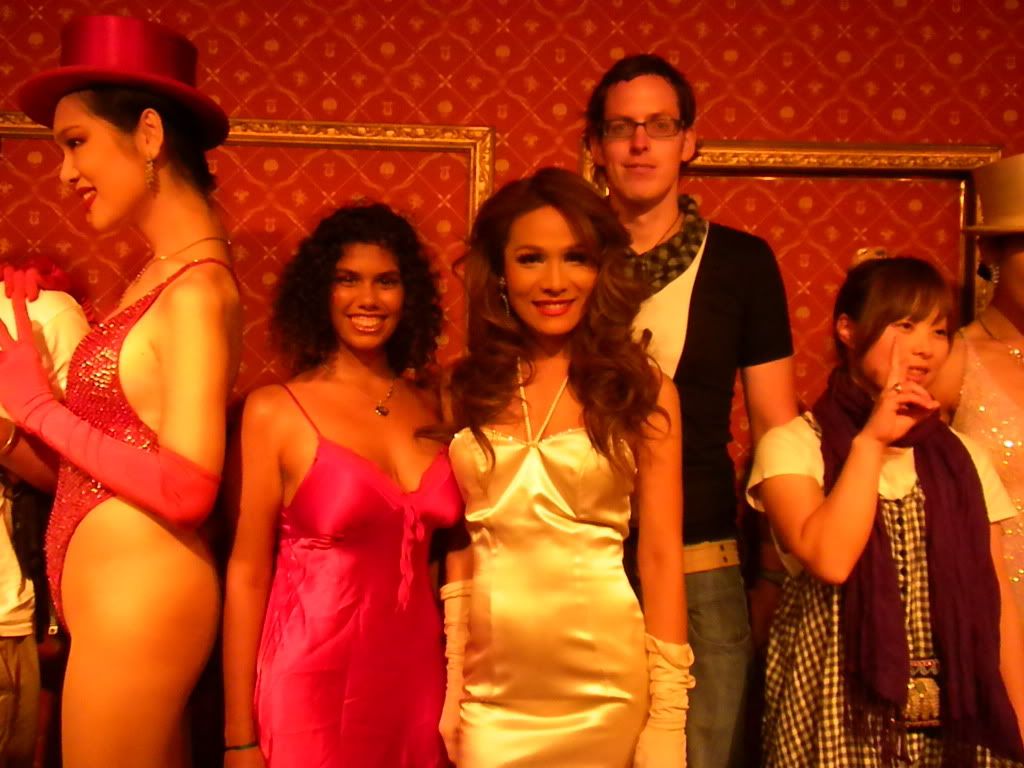

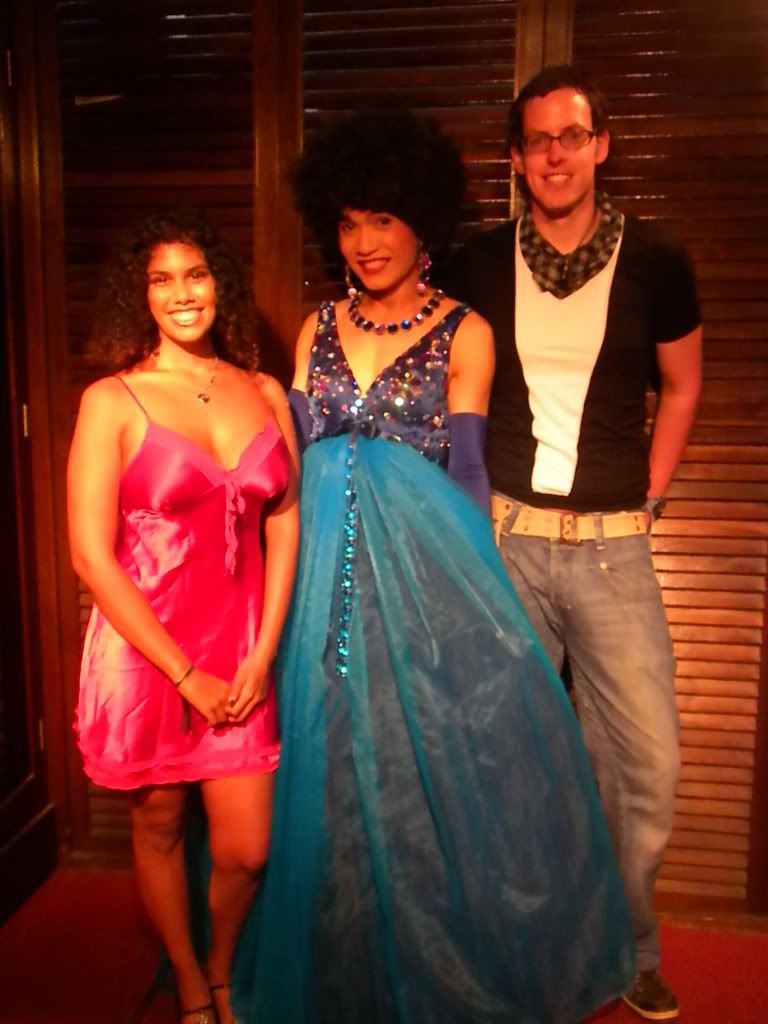
After we left the show, we planned to hit up some of Bangkok’s infamous go-go bars on Soi Cowboy and possibly Nana Plaza. We started by taking the SkyTrain to Soi Cowboy. Soi Cowboy is an area named (according to the Lonely Planet) for a black American ex-GI who fought in the Vietnam War. He was nicknamed ‘Cowboy,’ and was among the first to open a self-named go-go bar in the area. We decided to walk down the street first to get a feel for the area, and to my surprise it actually wasn’t as large an entertainment area as I predicted – I guess I had Las Vegas in mind! However, there were still a decent amount of go-go bars there... about 25 to 30 different bars, each with girls outside attempting to lure people inside.
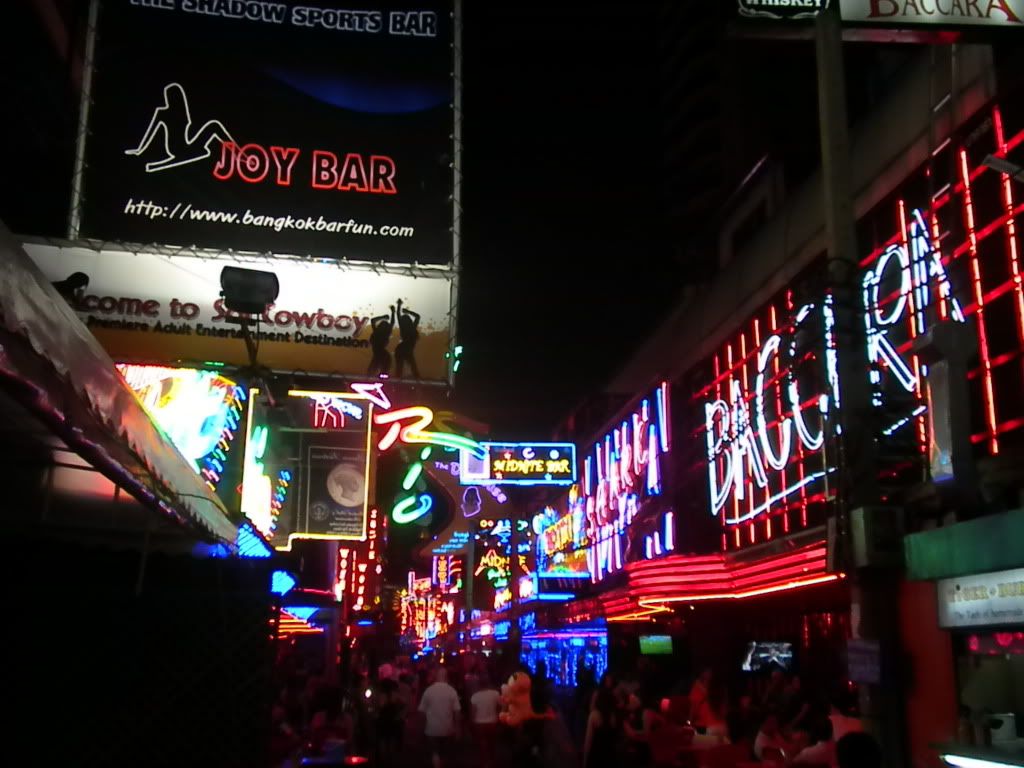
As we got to the end of the strip, I spotted a bar I read about online called ‘Tilac Bar.’ Once inside we found a spot along the back so we’d have the best view of the bar and ordered some drinks. Now, if you don’t know much about the go-go bars of Bangkok, let me give you a quick – and raw – understanding of how the process works. This business is the ‘adult entertainment’ industry, but to put it bluntly these girls are in a sex tourism industry – serving as ‘entertainment’ for the many sex tourists who visit Bangkok for solely this purpose.
A group of girls mostly from the countryside of Thailand (some decently attractive, many quite old or unattractive… some were quite hideous to be honest!) are simultaneously on stage displaying varying levels of nudity. The girls working in the bar are either sold by their parents into the business or choose to work in the trade to provide money for their family back home in the country. Music plays in the bar, but only one or two out of twenty or so girls even try to look like they are dancing to it. They mostly stand around on stage in short skirts and wait for their number to be chosen sometime throughout the night by a patron.
These patrons, or sex tourists, are men or women (both are equally accepted as clients) who come into the club and watch the show for a while. The tourist then decides on a girl that he or she wants to spend the night with. Each girl is pinned with a sign that displays a number on their skirt or shirt, so the tourist tells the number to the bar ‘madam’ and pays the bar-fine for that girl. Henk and I thought the numbers made them look a bit like branded cattle. Bar fines range from 500 to 700 baht per girl (that’s about 15 to 20 USD.) Then a fee is negotiated with the girl herself, ranging from 1500 to 2000 baht (45 to 60 USD.) At every bar, there is a sign on the wall with two separate columns labeled “On” and “Off.” Once a girl’s bar fine has been paid by a tourist, her number is erased from the “on” column, re-written in the “off” column, and she leaves with him or her for the evening. As Henk put it, it was quite blatantly a “meat factory,” and Bangkok doesn’t even try to masquerade it in the slightest – despite that prostitution is actually illegal!
After spending a while in Tilac, Henk wasn’t too interested in staying in the area for much longer. So, rather than going all the way to Nana Plaza for the ladyboy go-go bars, we decided to jump into one more bar on Soi Cowboy that had an Egyptian theme and quite a lot more ‘sex show’ and nudity involved than the previous Tilac, although there was still very little dancing, and frankly ‘life,’ from most of the girls on stage. I do have to say it was quite sad to see what bored expressions the majority of them had. The one or two girls who did dance or tried to have fun with it were almost a relief to see. Still, the shows became quite monotonous very quickly, and since I knew Henk already wanted to leave we decided to head back home.
But we spotted something else we had to do first! Since I had been asking Henk about some of the Dutch snacks I had yet to try, when he saw ‘The Old Dutch Corner’ restaurant it was the perfect opportunity. We went inside and ordered bitterballen – a party snack which is basically a ball of fried mince meat for all you non-Dutchies out there. It was alright, but I tend to prefer sweet snacks. After finishing our little meal, we went back home to try and get some rest for the next day. It was an early morning wake-up call to go to the floating markets – and it was already well past midnight. We would need all the rest we could get in those few hours! Henk will tell you about our long day at the markets…


Francesca
Monday, January 11, 2010
Decorative Bangkok

An exhibit on Thai Folk Wisdom had some unique stories accompanying each art piece. The quote for this piece was: “Something in one’s hand is better than nothing.” This came from the short story: Uncle and Auntie had been sitting around doing nothing for several days, except sighing loudly. Yesterday, they argued until they were red in the face. Today things were calmer. Finally Auntie said “Well, we have no option do we? We’ll have to give in. Getting something will be better than nothing. Uncle was silent then mumbled as if to himself, “Well, getting a lump of shit is better than a fart I suppose.” I thought the story didn’t have much of a connection with the art piece it went with, but it was pretty humorous.
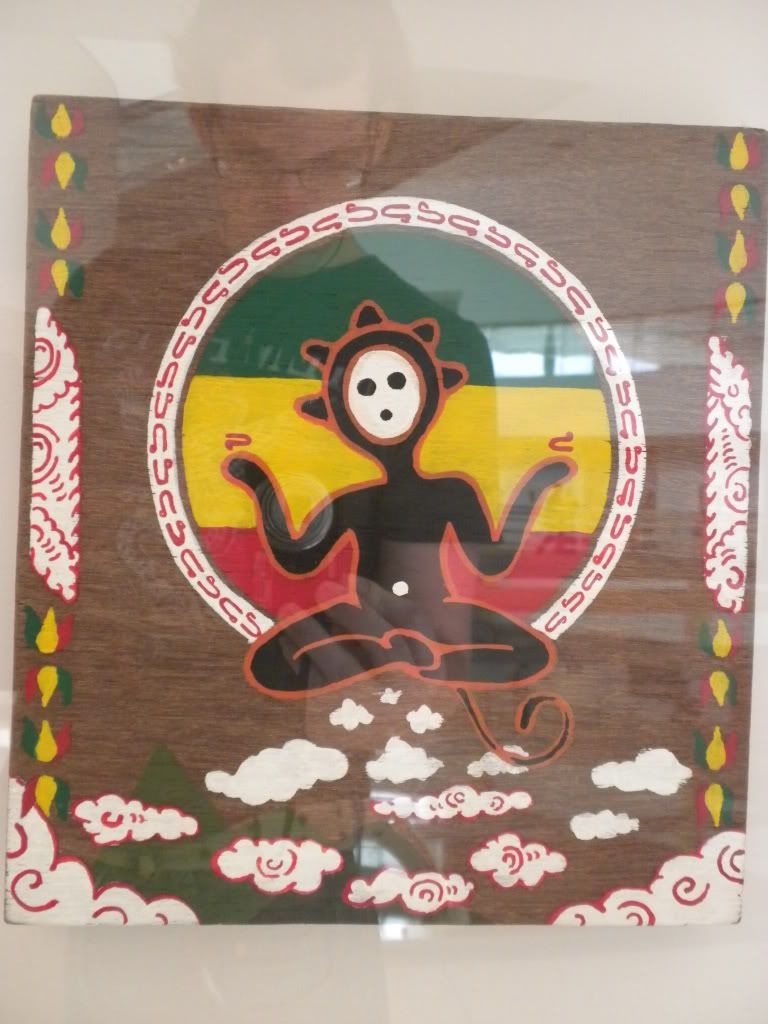
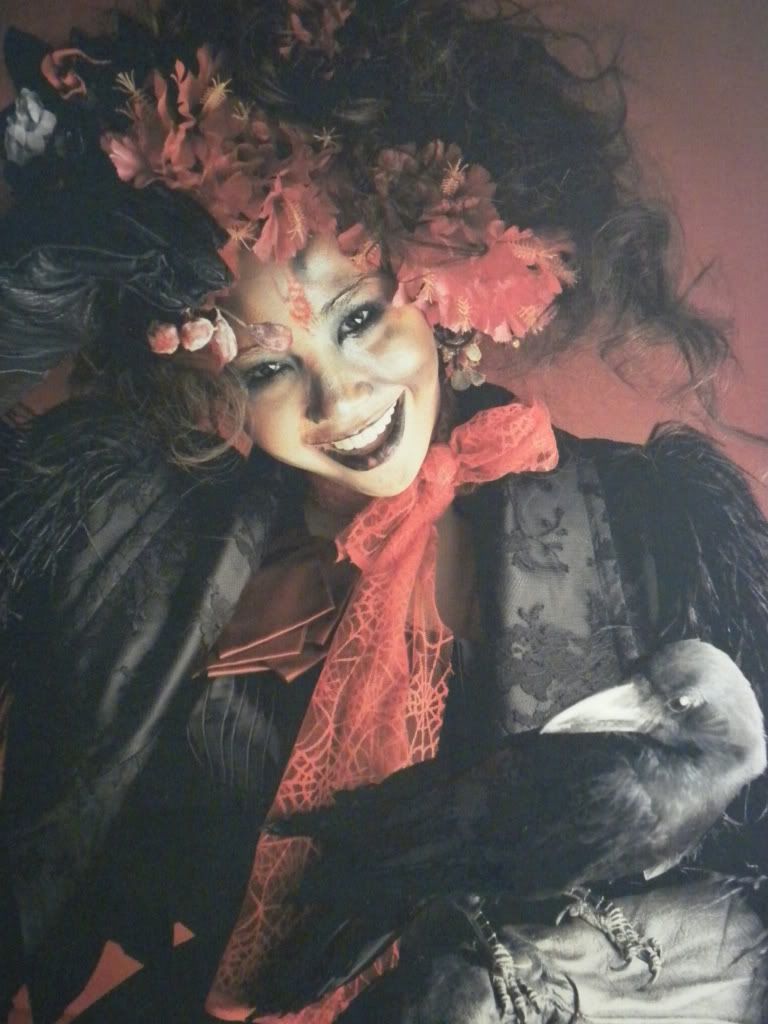
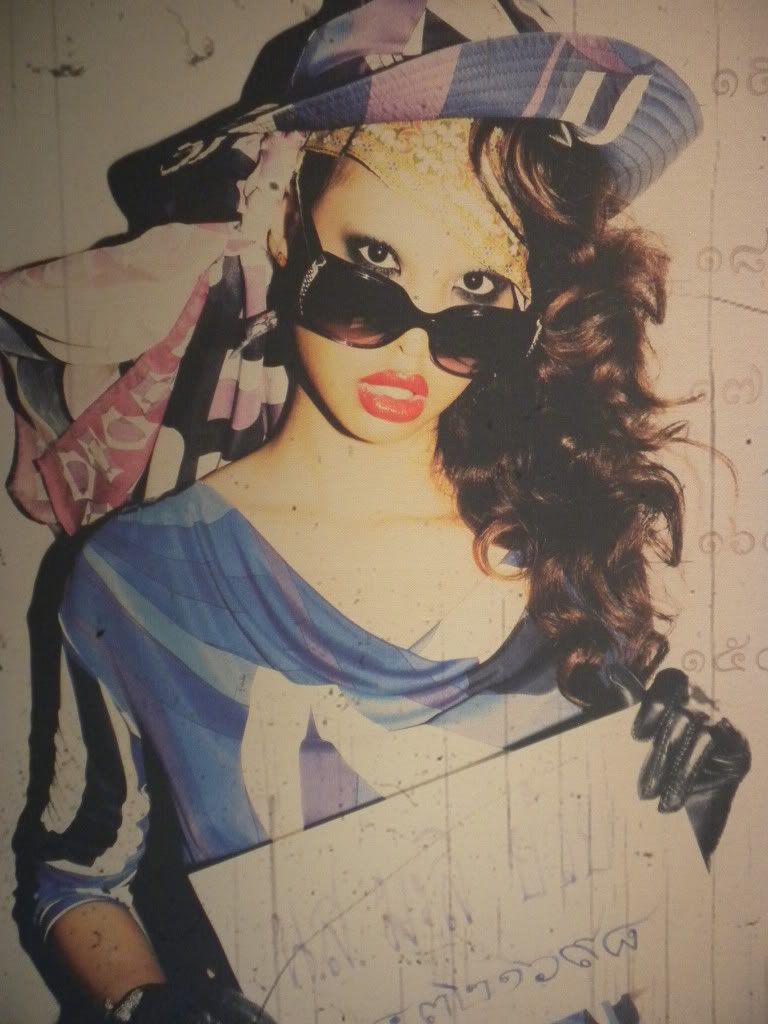
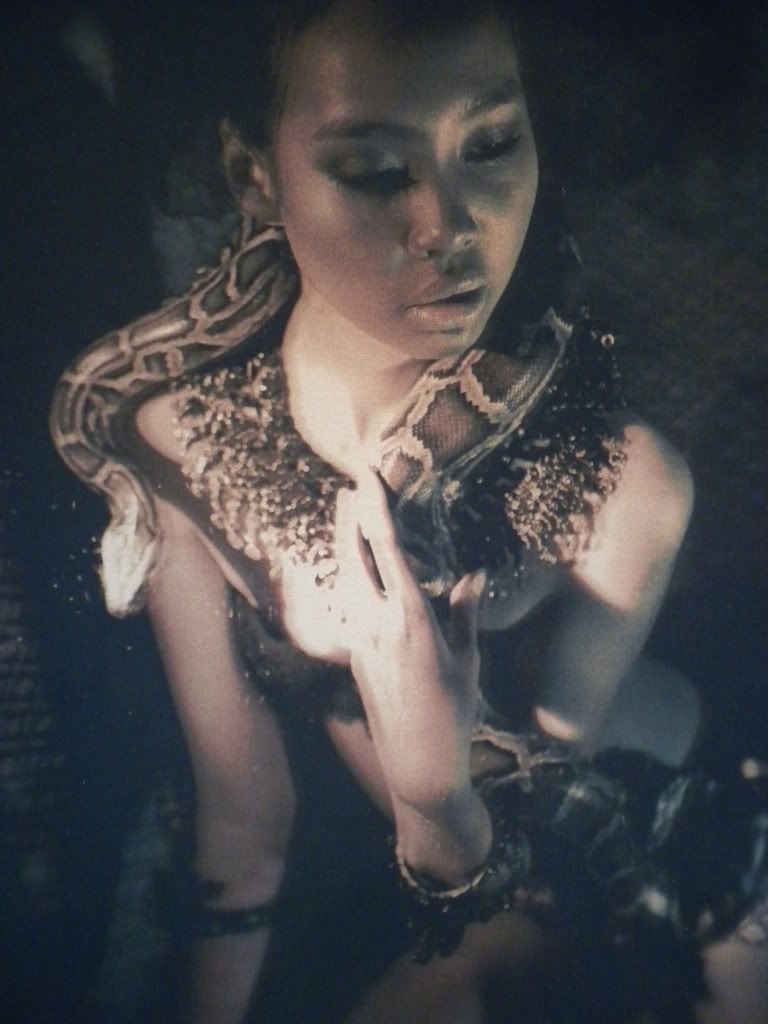
Next we found an exhibit on Burma, one on large wall paintings, and finally we made it to our goal: “Twist and Shout.” To be specific (according to the description) the Japanese artists here try to display two mindsets in their artwork – that of the introvert and that of the extrovert – as they relate to young Japanese culture. To explain what these means visually, you’ll have to take a look at a few of our pictures. The colors are bright and fun, yet much of the subject matter is serious or uncomfortable. One of the pieces even included the artist sitting behind a mask in the corner of his artwork – creepy yet captivating! Our exploration ended with a cool large art piece consisting of a room filled with bright blue LED numbers which symbolized “Massive Death,” or a worldwide apocalypse as they constantly “counted down.”
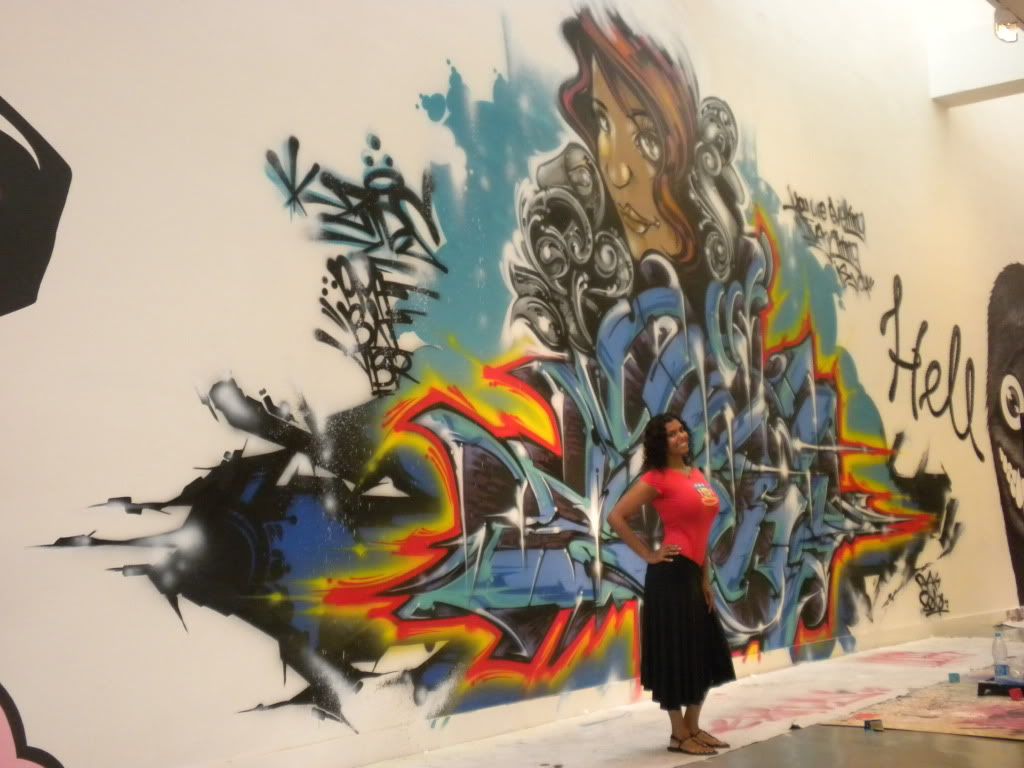
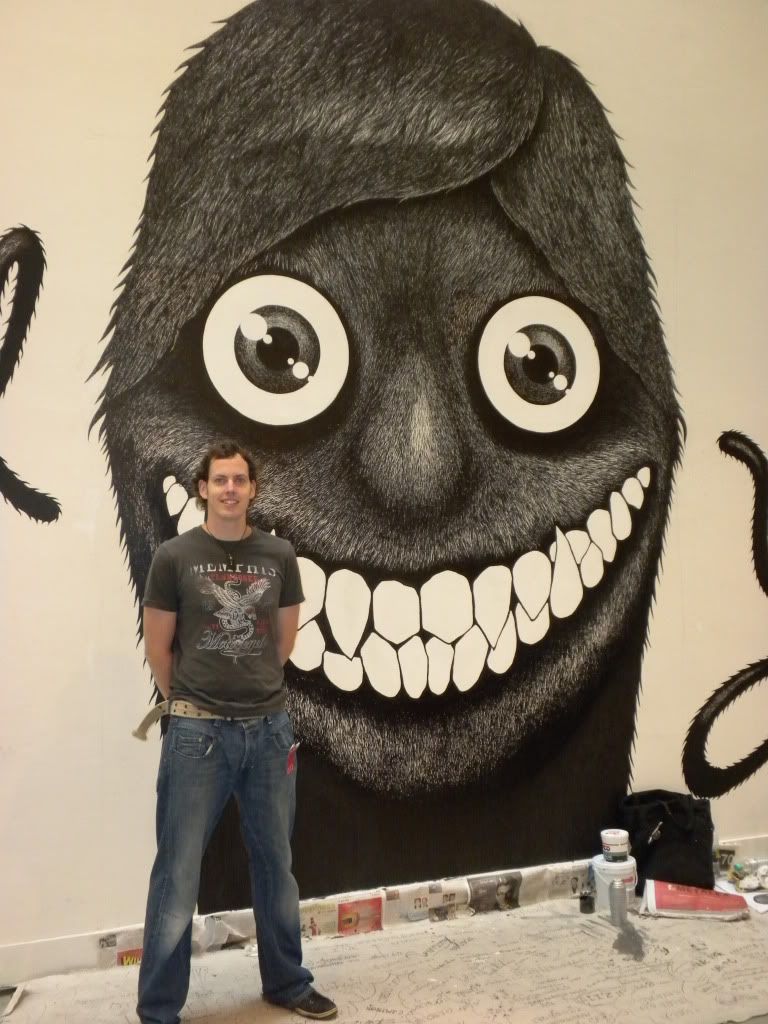
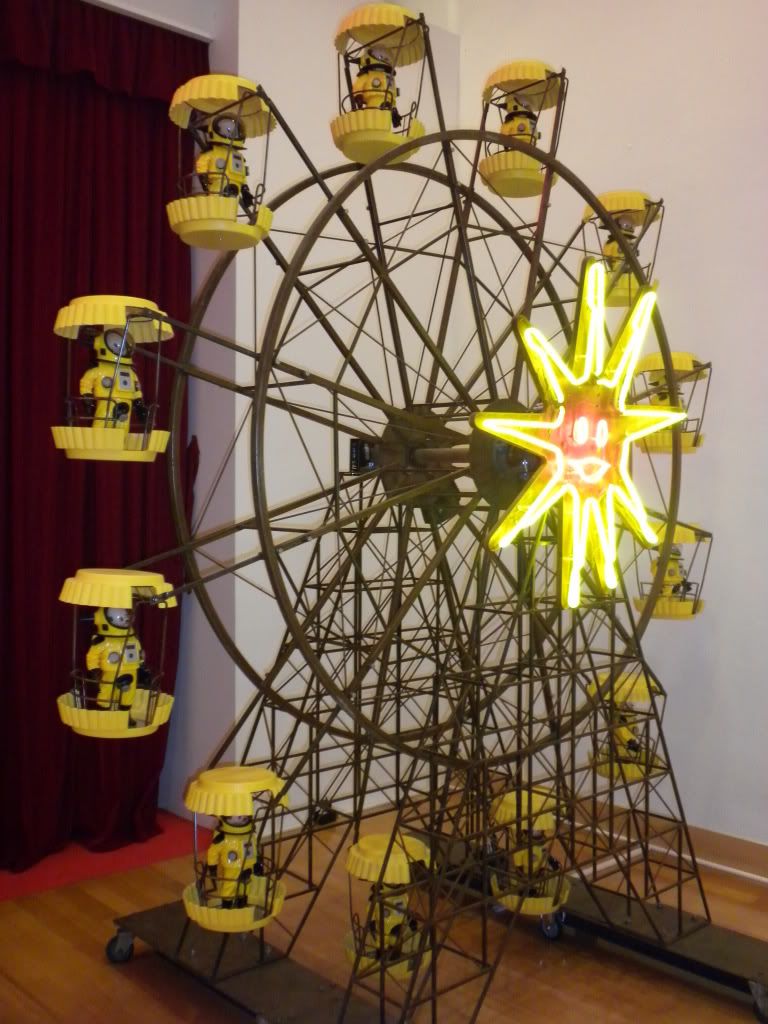

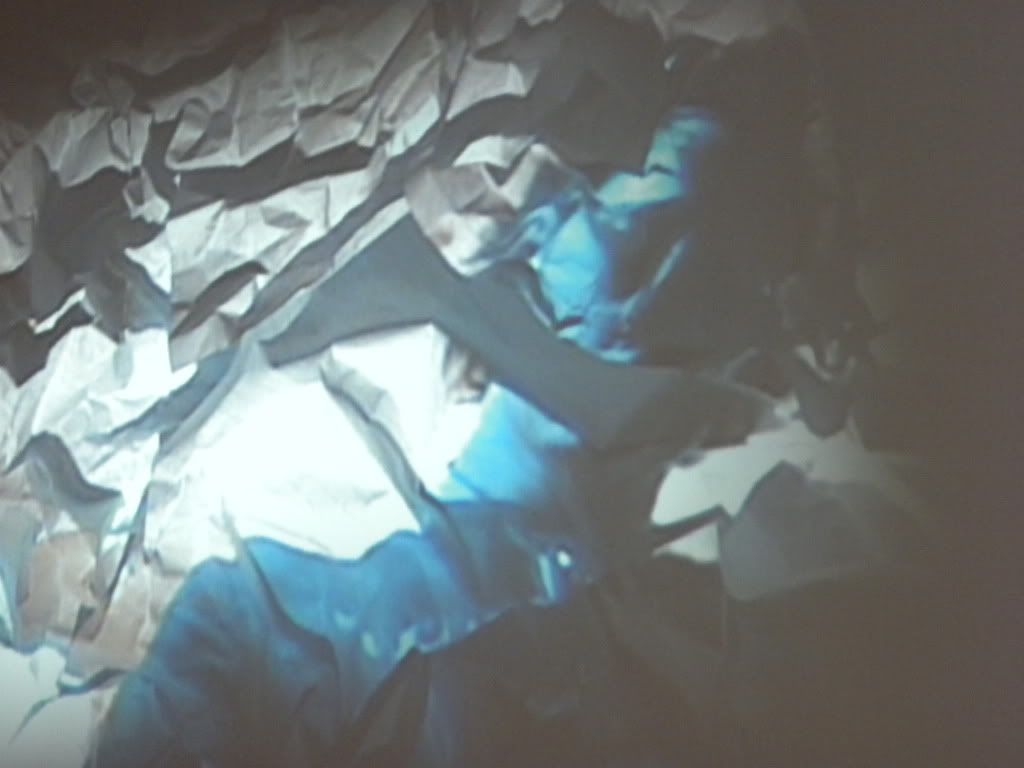
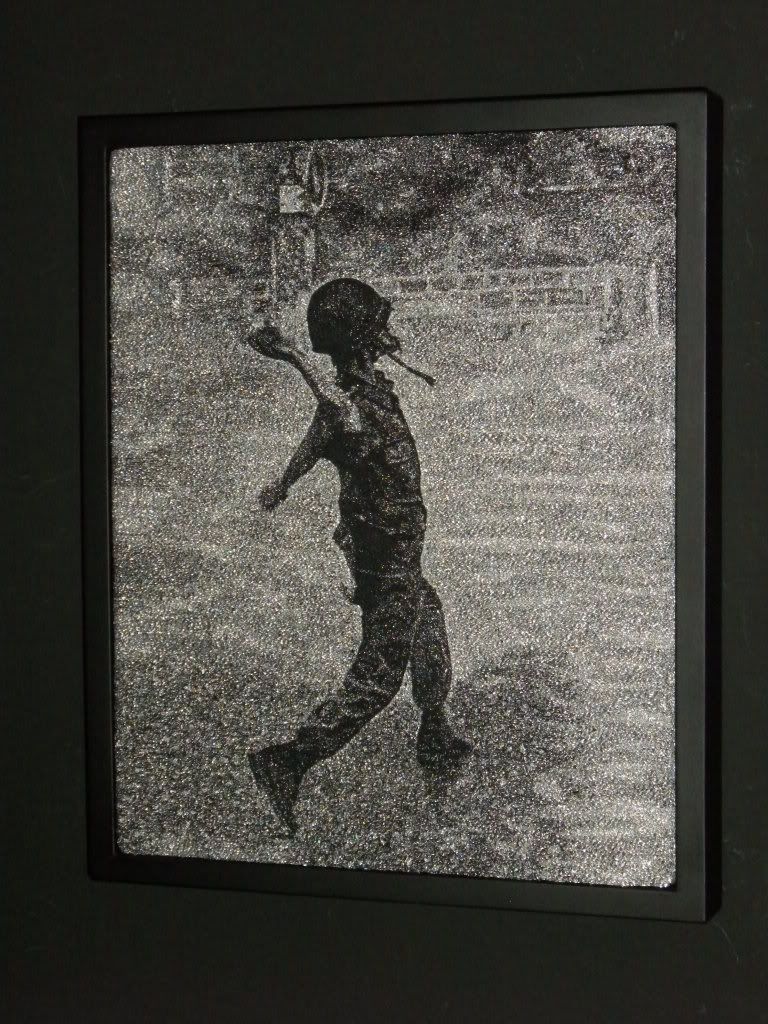
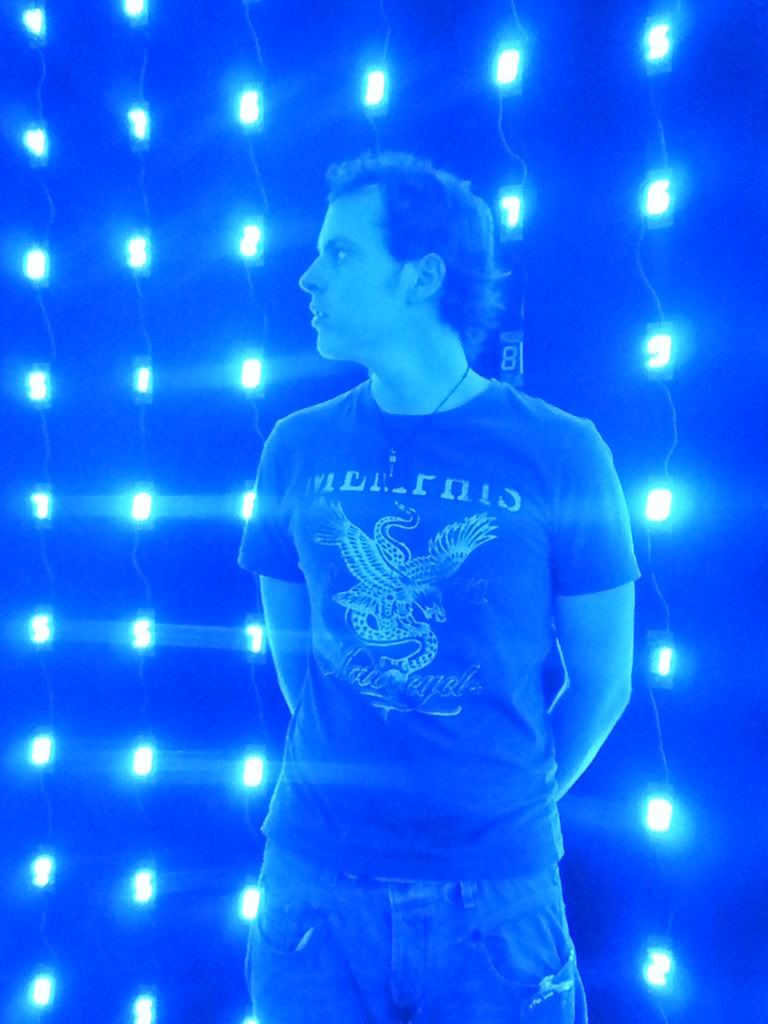
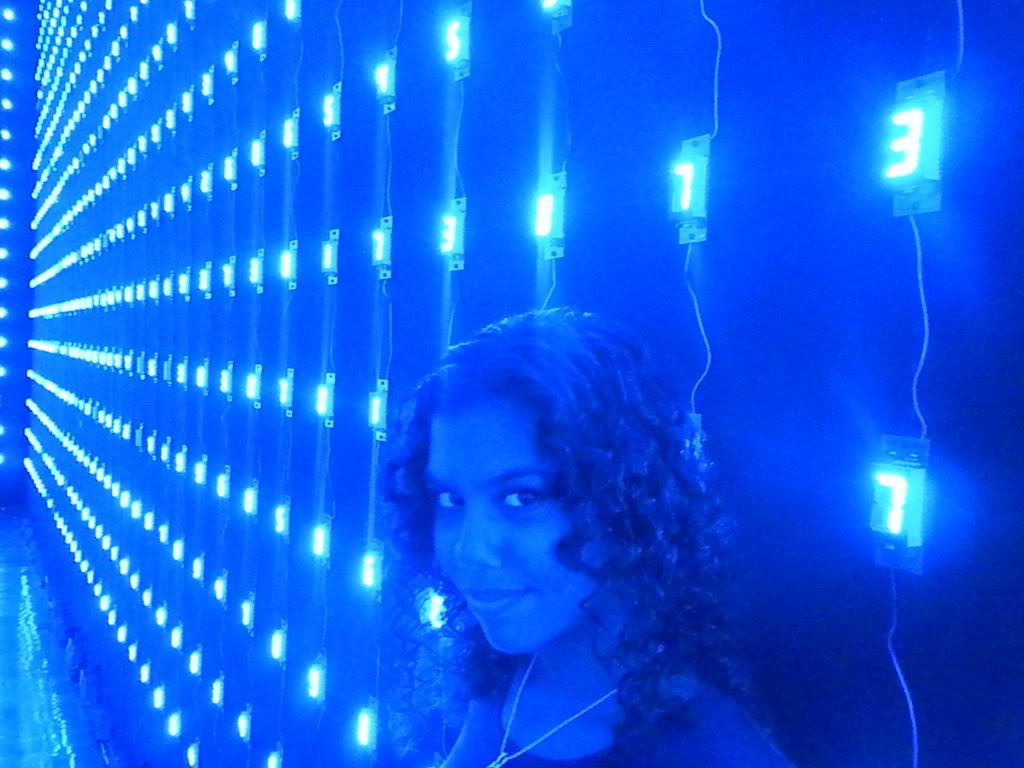
Shortly after 12:00 PM, Henk and I arrived at the Jim Thompson House, our original destination for the day. Since we felt a little pressed for time, we by-passed having lunch in the cool little café’ there, and signed up for the next available tour right away. We popped into the on-site museum on Astrology since we had 20 minutes or so to kill before the tour would begin. We learned: that “…Thailand’s astrological system was influenced by Hinduism and associated with a cosmology that focused on the study of the sky and stars. Thai astrology focuses on power and the relationship between governing bodies and those who are governed. [Furthermore,] from the Ayutthaya to early Bangkok period, the social hierarchy was divided into five categories: ruler, aristocrat, monk, commoners and slaves.” Interesting! I discovered that I am a “fire rabbit,” and Henk is a “wood ox” according to our astrological birthdates. We next moved on to trying samples of our personal “essential oils – mind was bergamot/jasmine and Henk’s was oil that included vertiver.

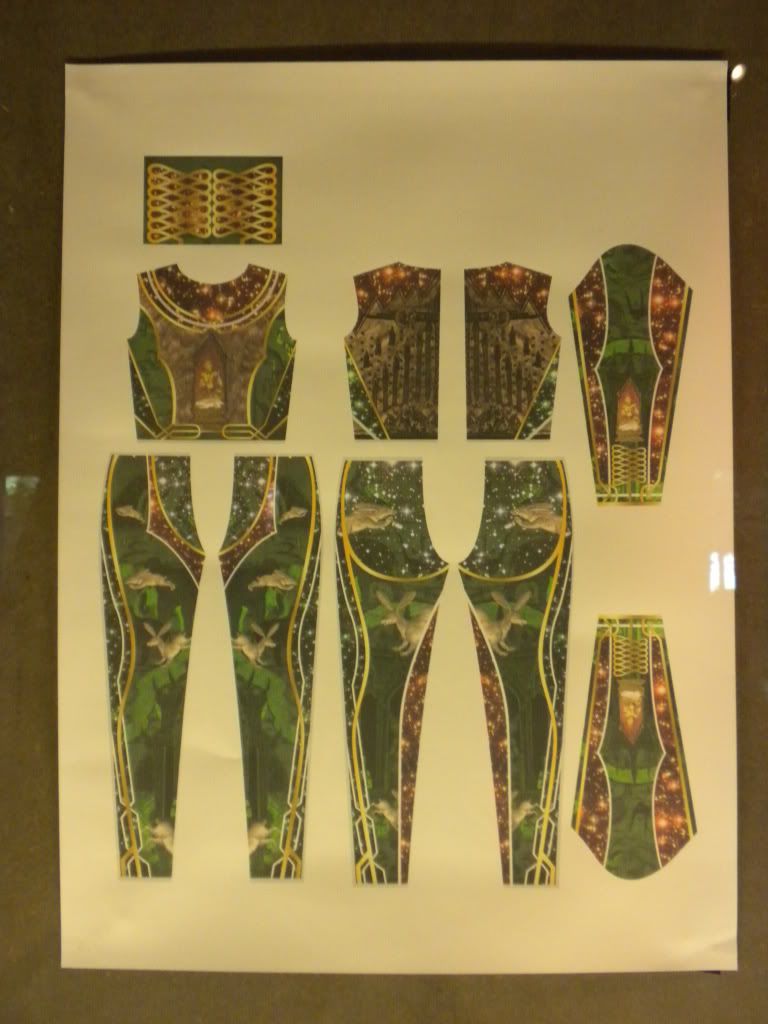
We checked the time – our tour was starting! We walked over to the meeting point and joined our group. Some background on him we learned from our tour: “Jim Thompson… was an American… [and] a practicing architect… he was sent to Bangkok… and fell in love with Thailand… decid[ing] to live in Thailand permanently... He gained further renown through the construction of his house which combined six teak buildings. On March 26th, 1967 [he] disappeared while on a visit to the Cameron Highlands in Malaysia. Not a single valid clue has turned up in the ensuing years as to what might have happened to him.”


Jim Thompson’s house was built in Thai-style, but larger. He actually took the normal layout of one Thai house and connected it together 6 times to make one large continuous floor plan. This included having “raised barriers” between doorways. I have always found these barriers to be slightly annoying (easy to stub your toe on them) but I knew that for some reason you weren’t supposed to step ON the barrier, but OVER it instead. Our guide explained to us that these barriers stop evil spirits from moving between rooms in the house, since Thai people believe spirits can only move across the floor.
In this picture, you can see the Thai-style windows, which are slightly “off,” not perfectly rectangular. This was because the house was built using a special peg system that ends up making the entire house look a bit off, and thus the windows are designed to make in an attempt to make things seem more symmetrical. As we moved through the house (where we weren’t allowed to take pictures anymore) we came across Jim Thompson’s bedroom where we were shown two unique bedpans. The man’s bedpan was in the shape of a cat, whose head comes off for… well, you know. The woman’s bedpan was in the shape of a frog, with a back that was “open for business.”
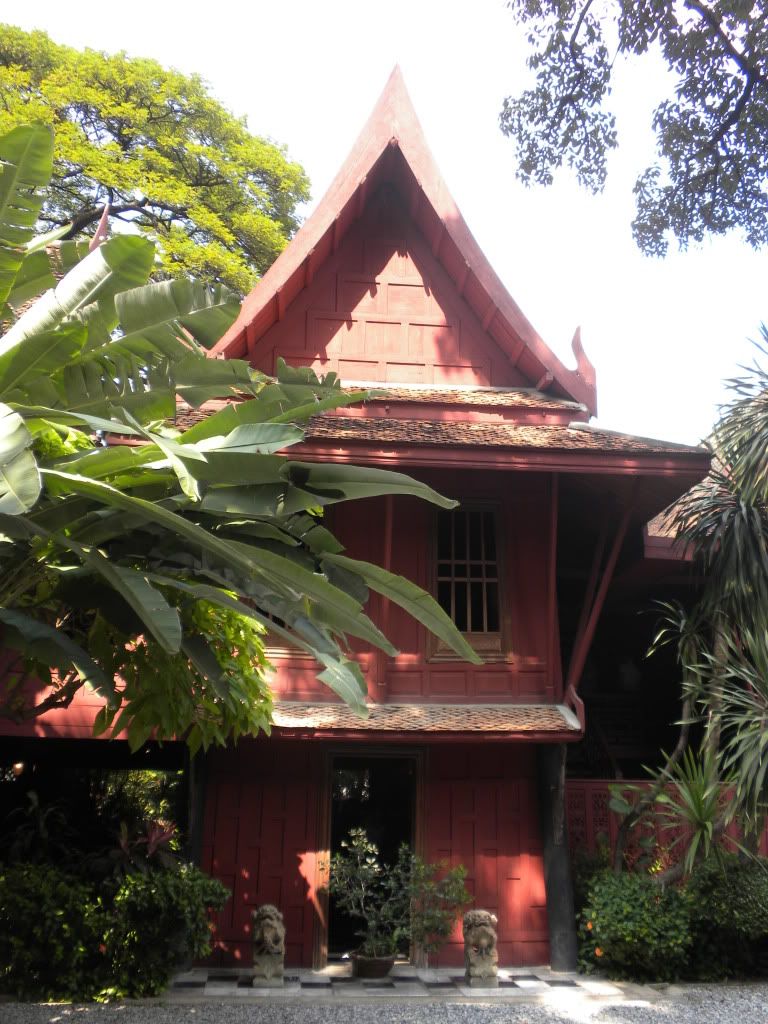
Thompson surrounded his house with huge trees and sprawling plants in an attempt to make his environment have a ‘jungle’ feel to it. Outside in the garden of Thai houses, including Jim Thompson’s, is a small “dollhouse-sized” house. However, this house is not for games. It is thought to house all of the good spirits and ancestors that protect the family of the large house, and thus ever morning offerings are made to the little house and its spirits to insure the well-being of the family. As we left the tour, we were given two little origami gifts – a paper frog that hopped for Henk, and a paper swan that flapped for me. Cute!

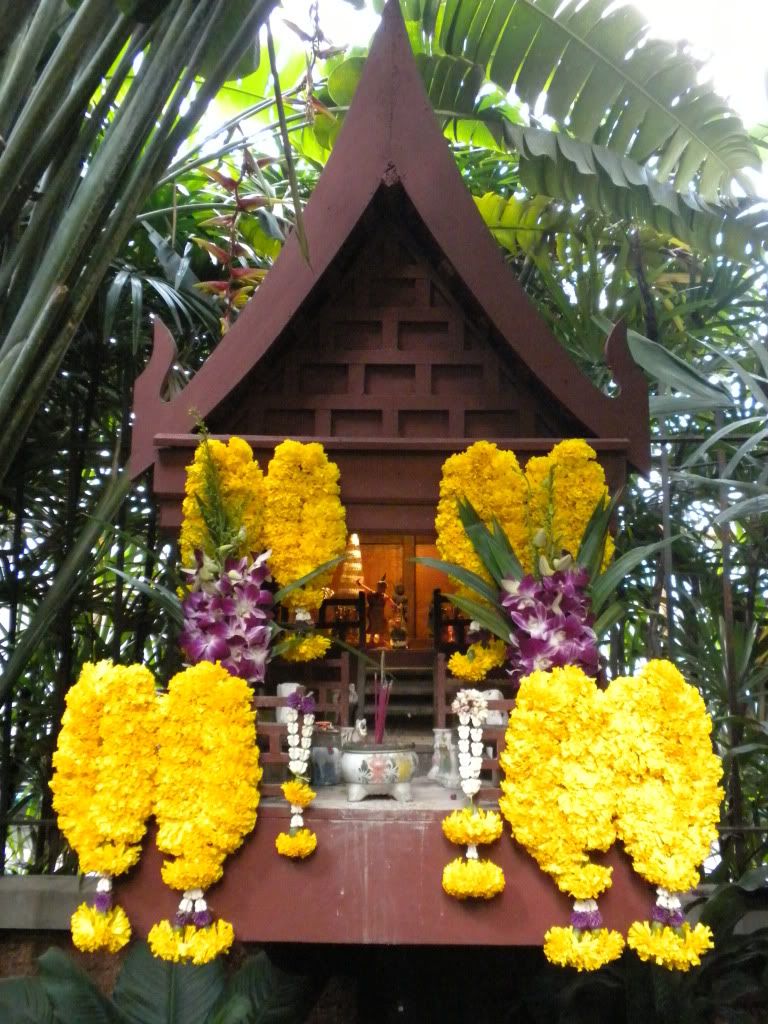
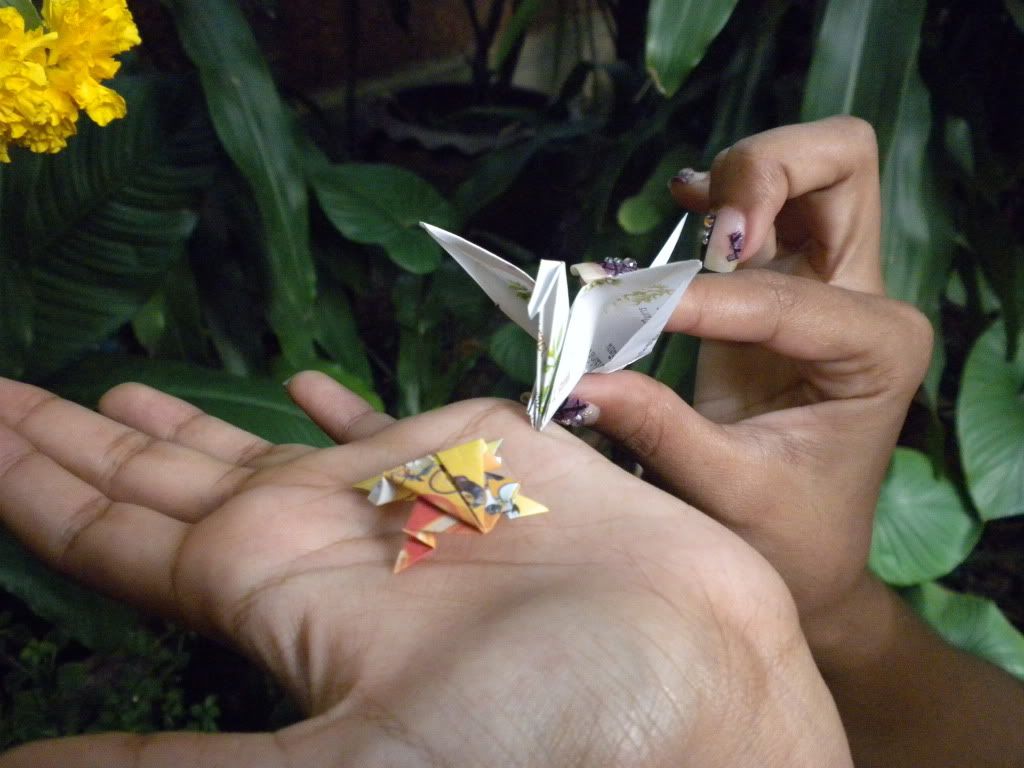
We jumped in a cab heading all the way across town to the Vimanmek Dusit Palace; the largest golden teakwood mansion. Since the mansion was built after King Rama V’s return from a trip to Europe, the 120 meter + long house reflects a clearly Western influence. The brochure: “In 1897, King Rama V used his personal money to purchase orchards and paddy fields for the construction of a royal garden which he named ‘the Dusit Garden’… he then commanded in 1900 that a permanent residence be built in Dusit Garden. However, King Rama V only lived in Vimanmek for five years until another villa was complete. After Rama V, the Mansion was used by various consorts of the royal family, as the royal family themselves continued to live at the Grand Palace. Eventually, King Rama IX gave permission for the mansion to be renovated as a museum to commemorate King Rama V.” There was nothing too “Thai” about the mansion, since it was done in Western-style, so you’re not missing too much by only seeing a picture of the outside.
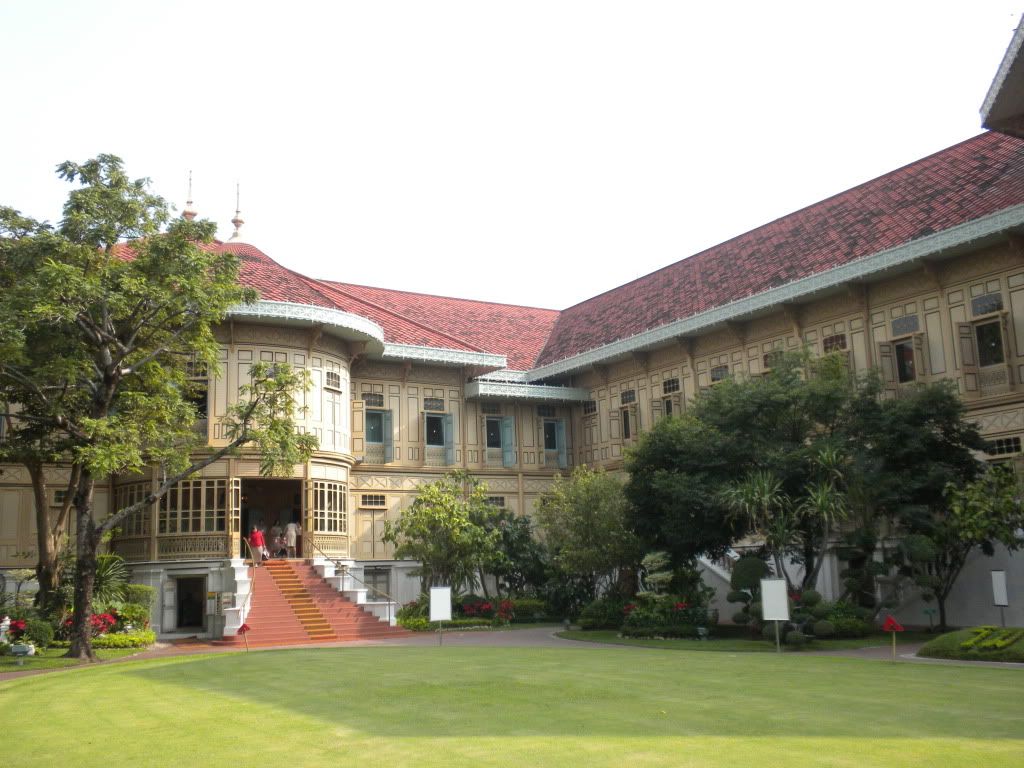
Next we made our way to the Throne Hall, which was built by King Rama V as a lavish reception hall. Since King Rama V seemed to really have a fetish for Western-style architecture after his trip, he had this building constructed in the Italian Renaissance and Neo Classic style. Here, again, we weren’t allowed to take pictures. This building was amazing to Henk and I! Really something unique: the building itself was huge with a dome that you’d expect to see Western murals on – Christian-themes, or Roman/Greek-themes – but instead, you are presented with a huge image of Buddha and Thai-themes on the ceiling above you. It was a bizarre contrast that for some reason seemed to work… I think it is the similar elaborateness in display that Thais and Westerners give to such buildings that made the contrasting East/West themes mesh well. That dome it something you have to see! Also inside were some fantastic gold pieces that were so detailed they start to hurt your eyes just looking at them. One notable piece I remember was a large green dragon-decorated chandelier – words can’t do that thing justice! It was elegant yet dark, refined and still there was something eerie about its presence on the ceiling. Incredible.
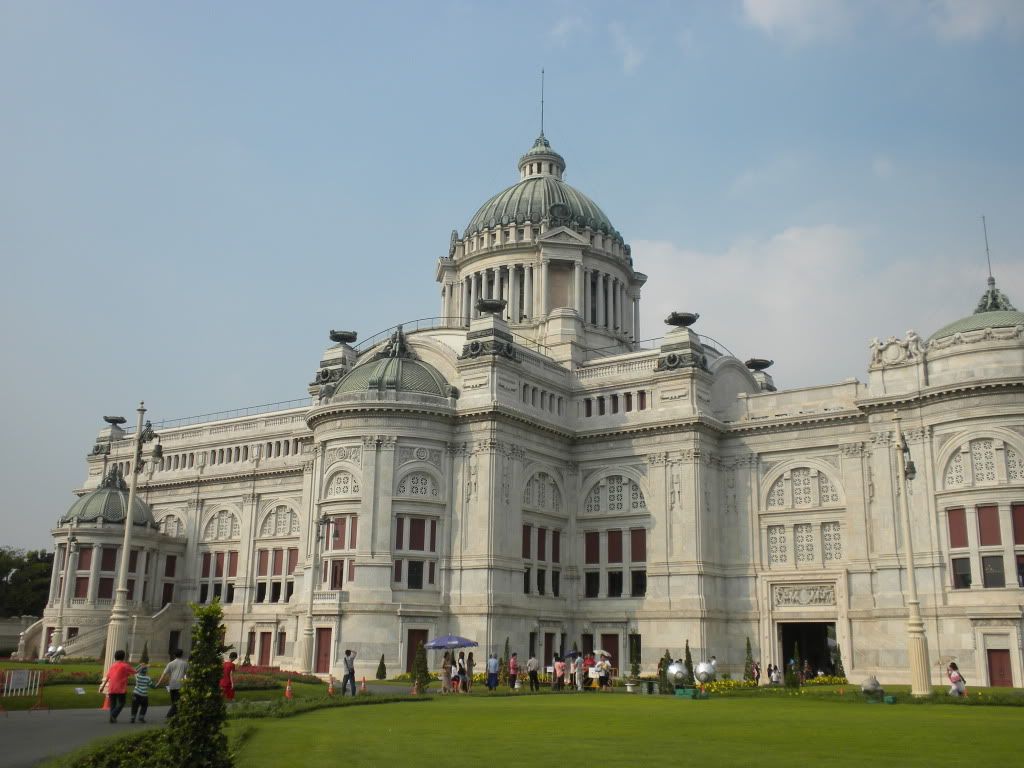
Exiting the Throne Hall, we found the grounds pretty packed with people. We had learned earlier that it was “Children’s Day,” and thus some of the exhibits were free to the public, so pretty much everyone was out for the afternoon. Henk and I flagged down a tuk-tuk and negotiated for the driver to take us to the SkyTrain stop. We were headed to JJ (JatuJak) Market! This market is the world’s biggest weekend market which makes it difficult to navigate since it’s so large, even with a map. By the time we got to the market it was 4:30 pm and we were starving! After searching a couple places, we sat down at one of the stalls for some delicious food. Done with our meal, we got up to start exploring. We were pretty awed by the extent of the market – it seemed never to end! There were snacks being prepared, pets on offer, even garden-ware! We ended up buying a new shirt for Henk and some cute little key-rings for my purse for a total of I think $3.00 or so. Everything was so cheap! We roamed around the market until sunset, when we returned to the SkyTrain to take us back to our hostel.
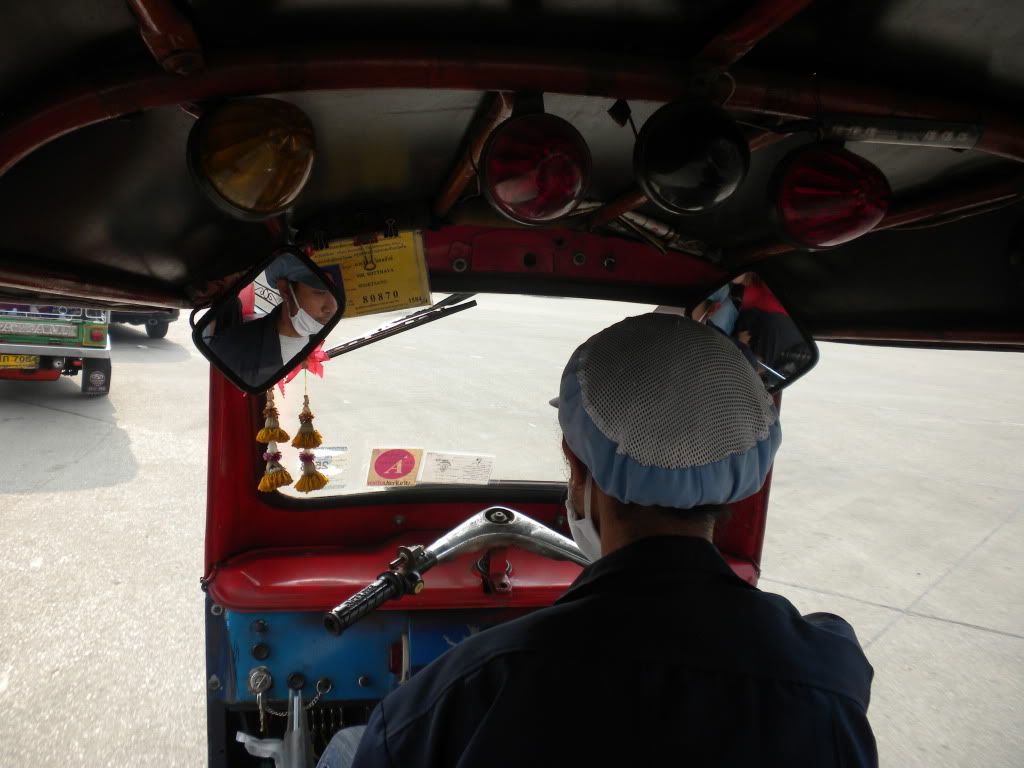
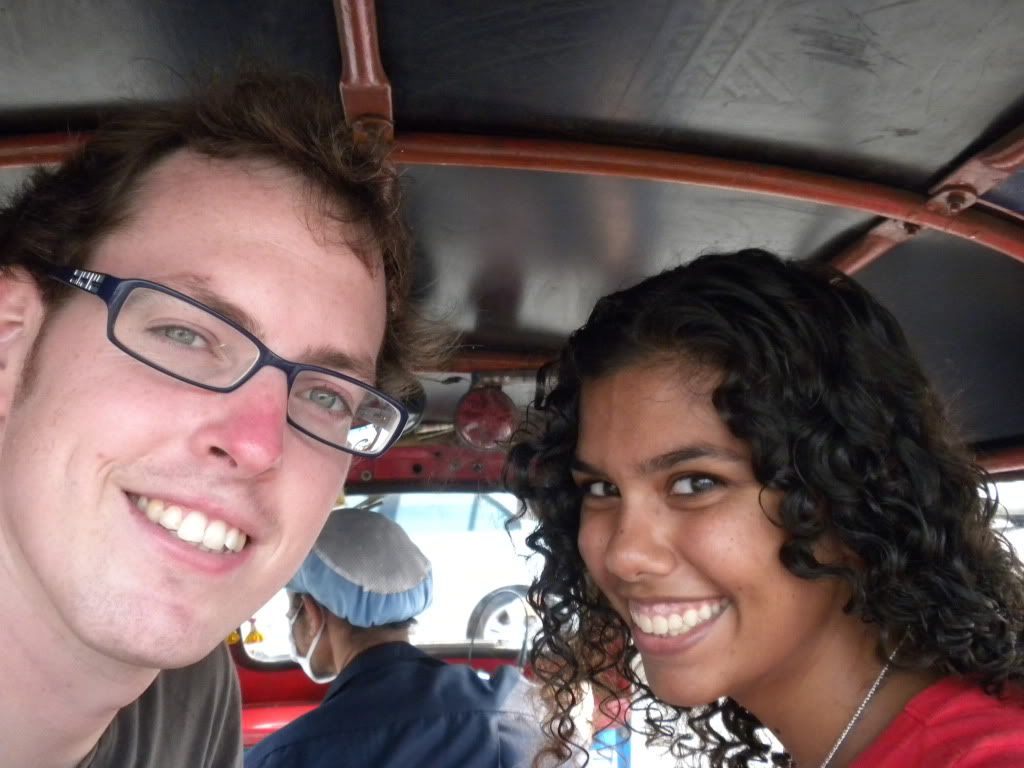
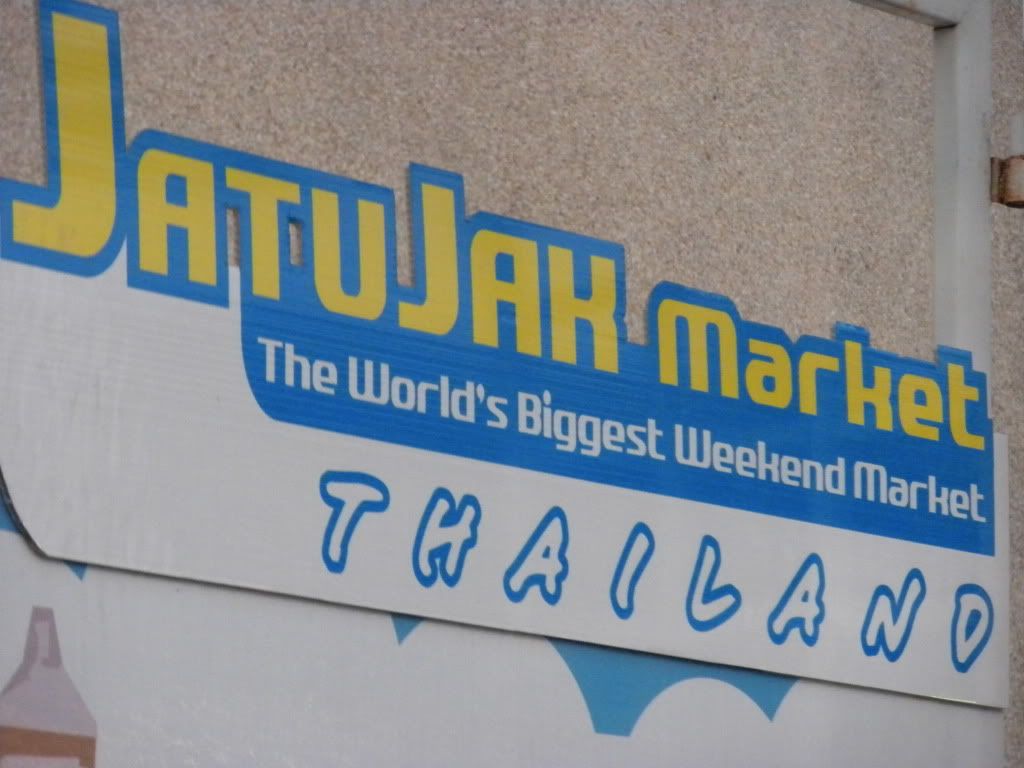
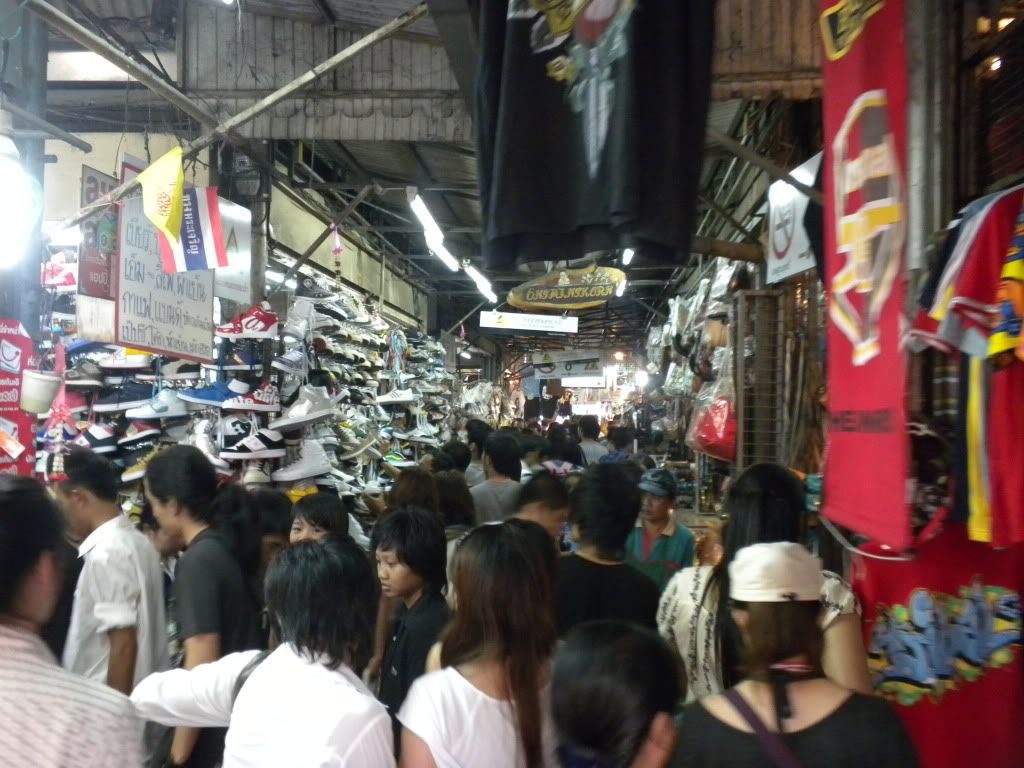
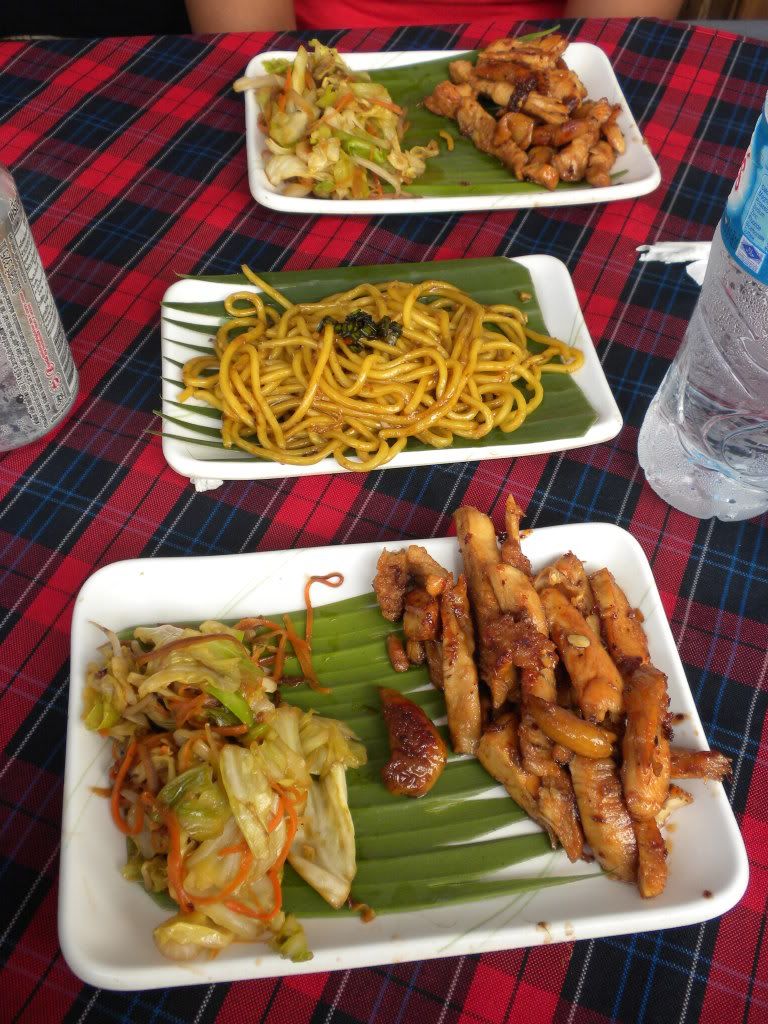

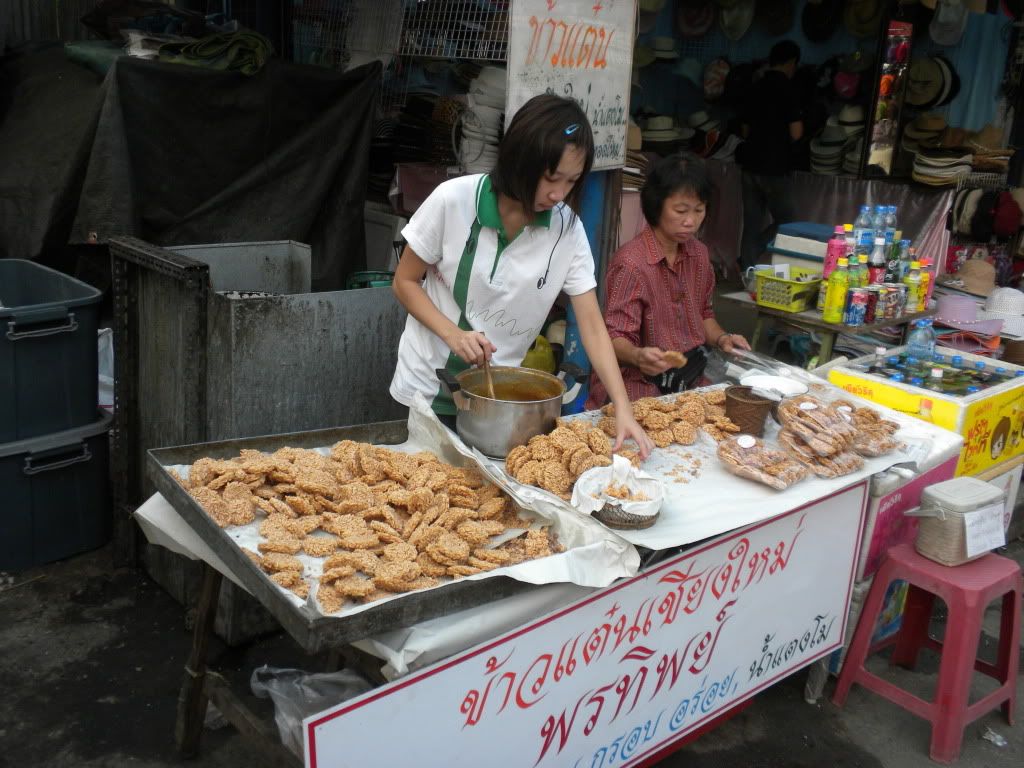
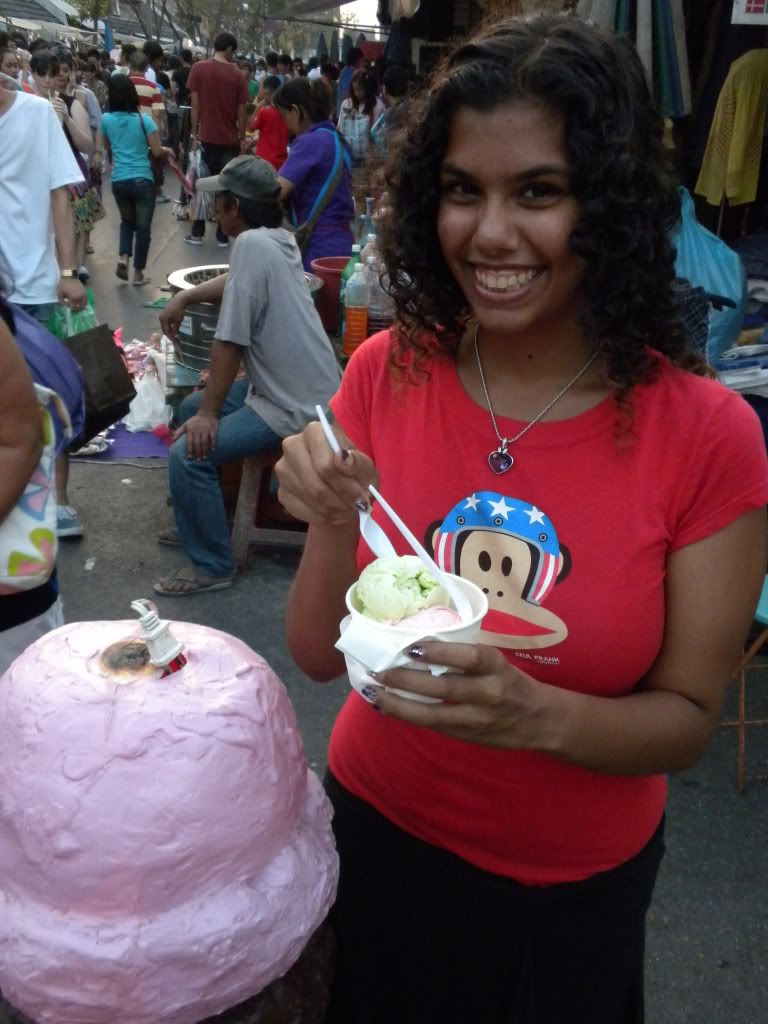
On the 10th of January our original plan was to take the Chinatown tram to explore the business district of Bangkok. However, when we got to the tram stop we learned that they had shut it down! Guess it wasn’t much of a money-maker. We revised our plan and decided to just walk to the Wat-Tri Mit Wit Thayaram instead… the temple that housed the largest solid gold Buddha. On our way to the temple, we were stopped by a man on the street who asked where we were going and told us the temple was closed because it was “a holiday.” He took our map and marked a different location with a pen, “You should go here instead.” Immediately, I pressed Henk to move on and not continue conversation with this guy – he was a scam artist! I had read both in the Lonely Planet and online about the many scams they have in Thailand for tourists.
Many of them follow the same storyline: On your way to the tourist attraction you planned to visit, a “friendly” local asks you if you need some help. Since most tourists are looking at their maps trying to find the attraction, it makes it easy for the local to interrupt. You ask them about the temple/palace/museum and they tell you that it is closed for the day for some reason. They then suggest you go to a different attraction, and even hire a tuk-tuk driver to take you around for a low price. The local claims the price is this low due to special government gas coupons (which is a complete lie) and then they proceed to take you to a temple or two and then bring you to a ton of jewelry stores and clothing stores as well in the hopes that you’ll buy some crazy overpriced item. Henk and I actually met a couple later in our trip who had this exact thing happen to them, but since they kept refusing to buy anything, the tuk-tuk driver moved onto his next customer.
Our visit to the Temple of the Golden Buddha began with a climb up the stairs to the first museum on Chinese heritage in the area. We learned how Chinese traders came on by junk ships from their homeland to settle around the Thai Kingdom. However, by the end of King Rama III’s reign, junk-trade began to decline, losing out to Western-style steamships. After the introduction of the steamship, the Chinese community experienced rapid growth and an expansion of their presence in Bangkok’s business area on Yaowarat Road – primarily fueled by their dominance of the rice trade. Their expertise resulted in Thailand becoming the world’s No. 1 rice exporter! After learning about the history of Chinatown, we climbed another set of stairs to the museum on the Golden Buddha itself.
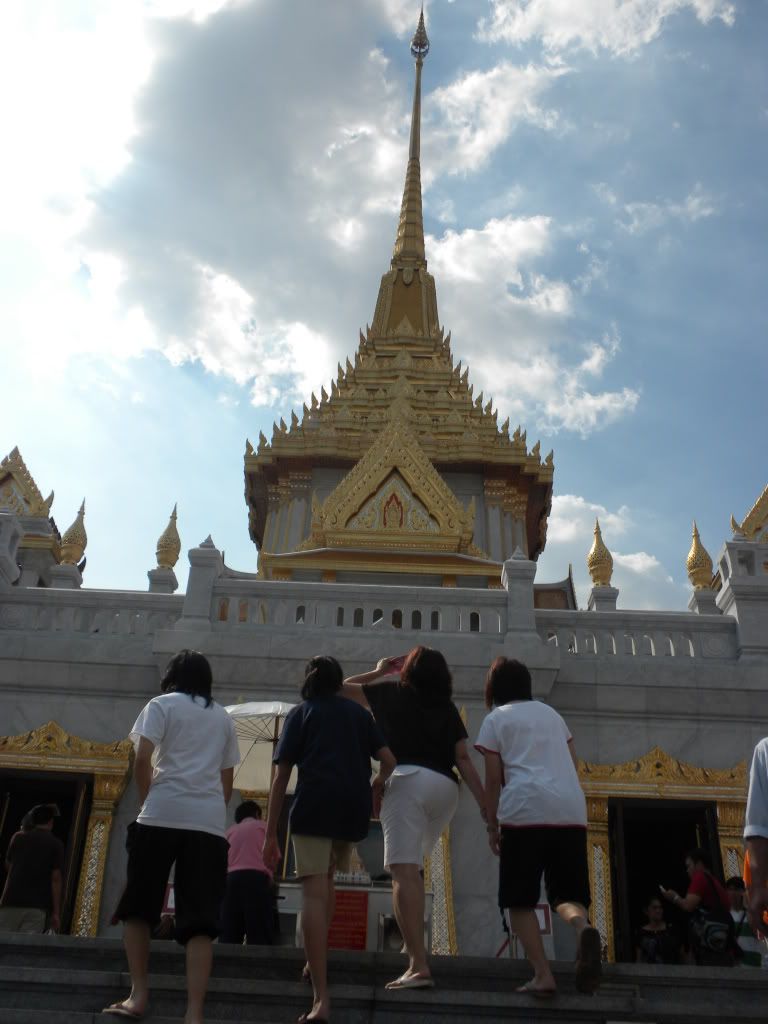
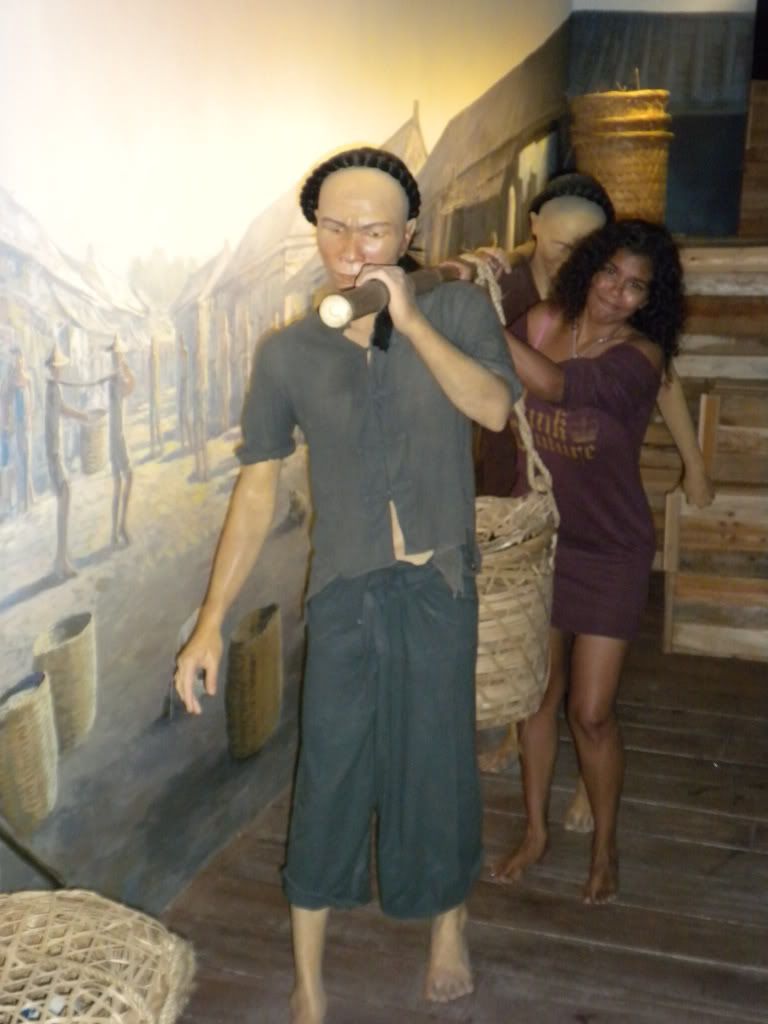
Here we learned that no one knows when or where the Golden Buddha image was built. But there are a few known facts about its creation: First a mold for the image was constructed and wax lines and wax molds were used to direct the flow of molten gold to create the image. The image is almost 400 cm high and weighs 5.5 tons. That’s a lot of gold! It is also known as (from the Guinness Book of World Records) “the sacred object with the highest intrinsic value.” This value is in excess of $50 million USD! (Wish we could grab just a finger or two!) The story of how it was found is quite similar to that of the Emerald Buddha: it was covered in plaster, dropped, and discovered to be made of something grander when the plaster cracked open. We marveled for a while, then left to walk around more of Chinatown.
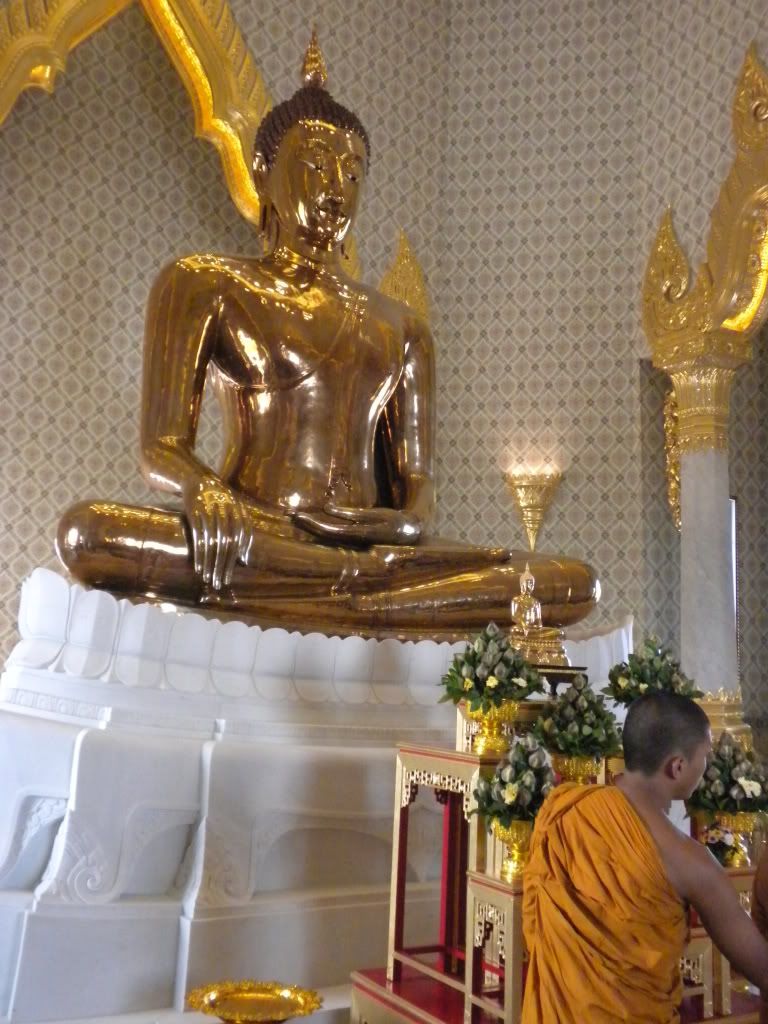
After a few failed attempts to find the little Indian side-street we had read about, we jumped into a nice café’ named ‘Kafe Kafe’ near the SkyTrain station for a bite and some relaxation under the AC. Henk and I read some magazines while we enjoyed spaghetti (which was rather spicy!) for myself and a Thai soup for him. While reading through some of the gossip mags, we came across a few awesome pictures by a ‘foodscape’ photographer named Carl Warner. We googled him and found his website right away. You should do the same, his pictures are really fascinating!
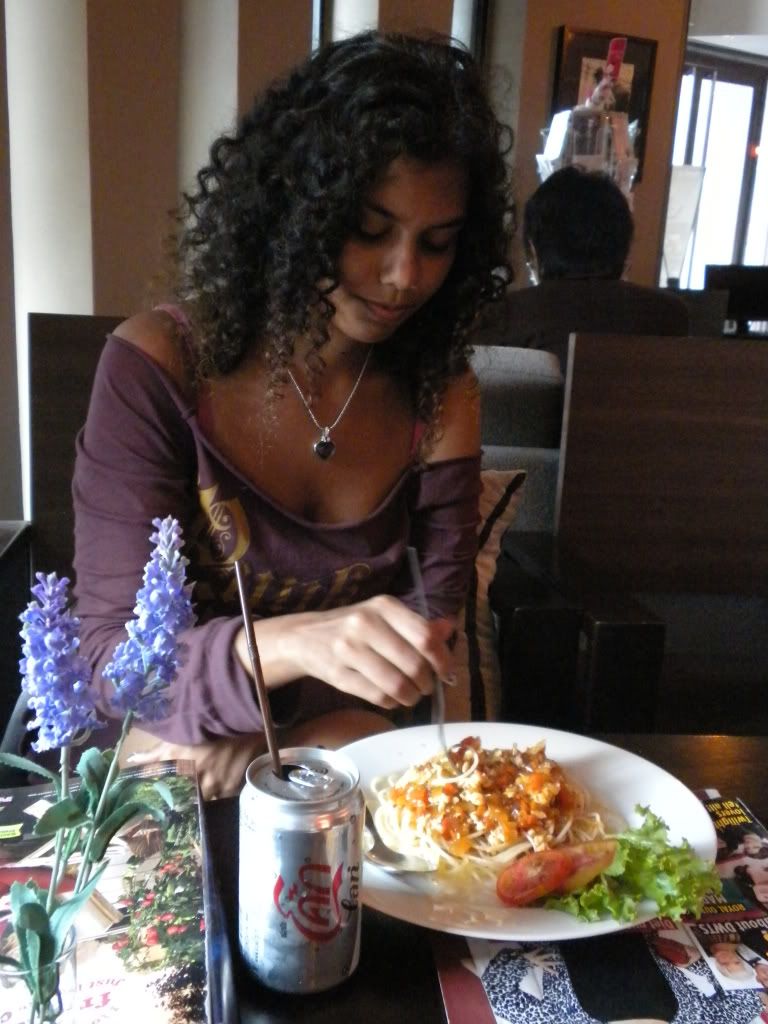

Next we visited the Rajadamnern Boxing Stadium via taxi for a quick look at prices. We actually got invited to see inside the arena while an extremely lightweight (aka practically little kids!) match was going on. Since the tickets were quite pricey and there were only amateur fights that day we decided to see boxing another time. We took another cab back to the hostel to relax for the evening. Since we had been running around so much the last days, we planned to relax on the 11th and just stay in the hostel watching movies and series.
